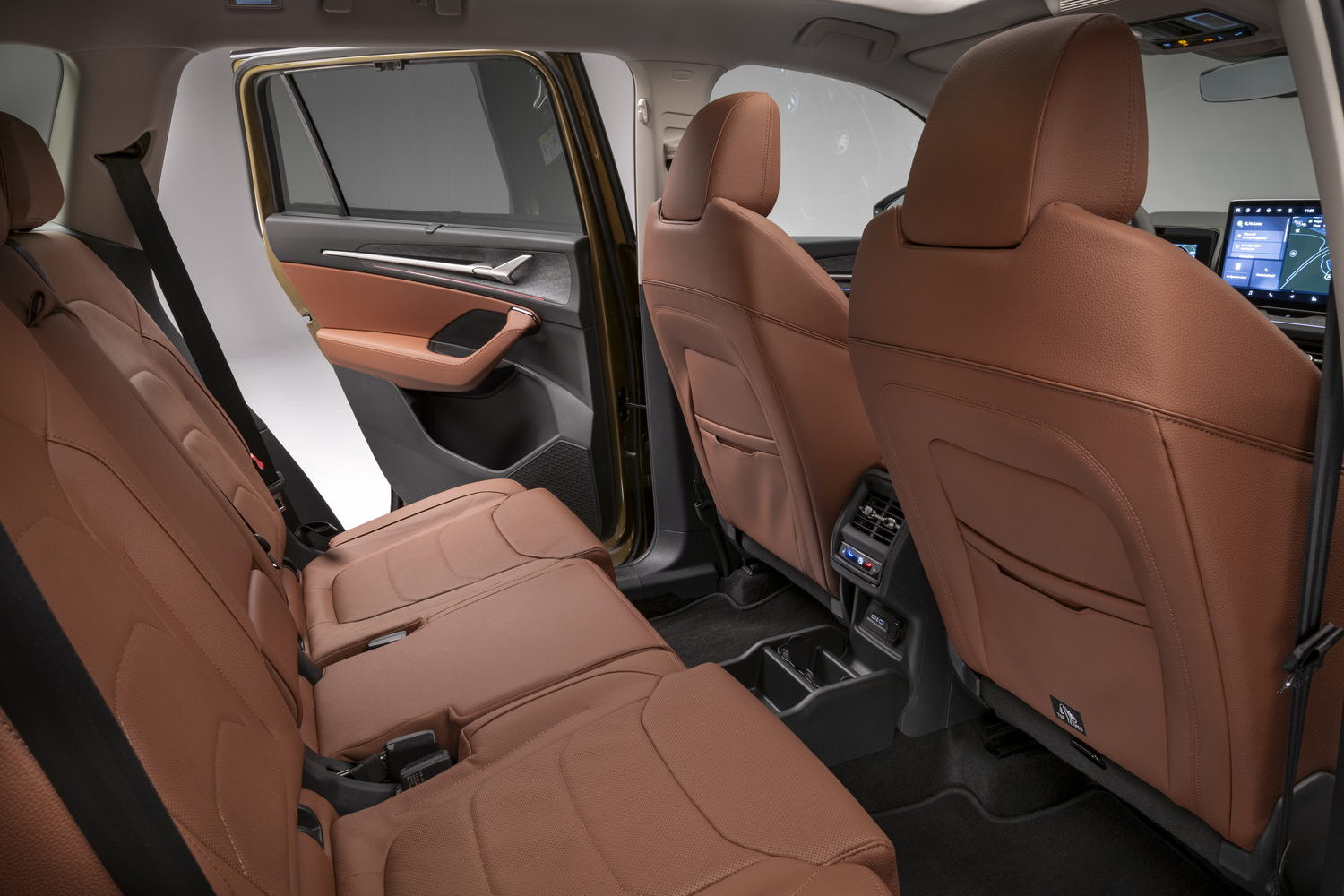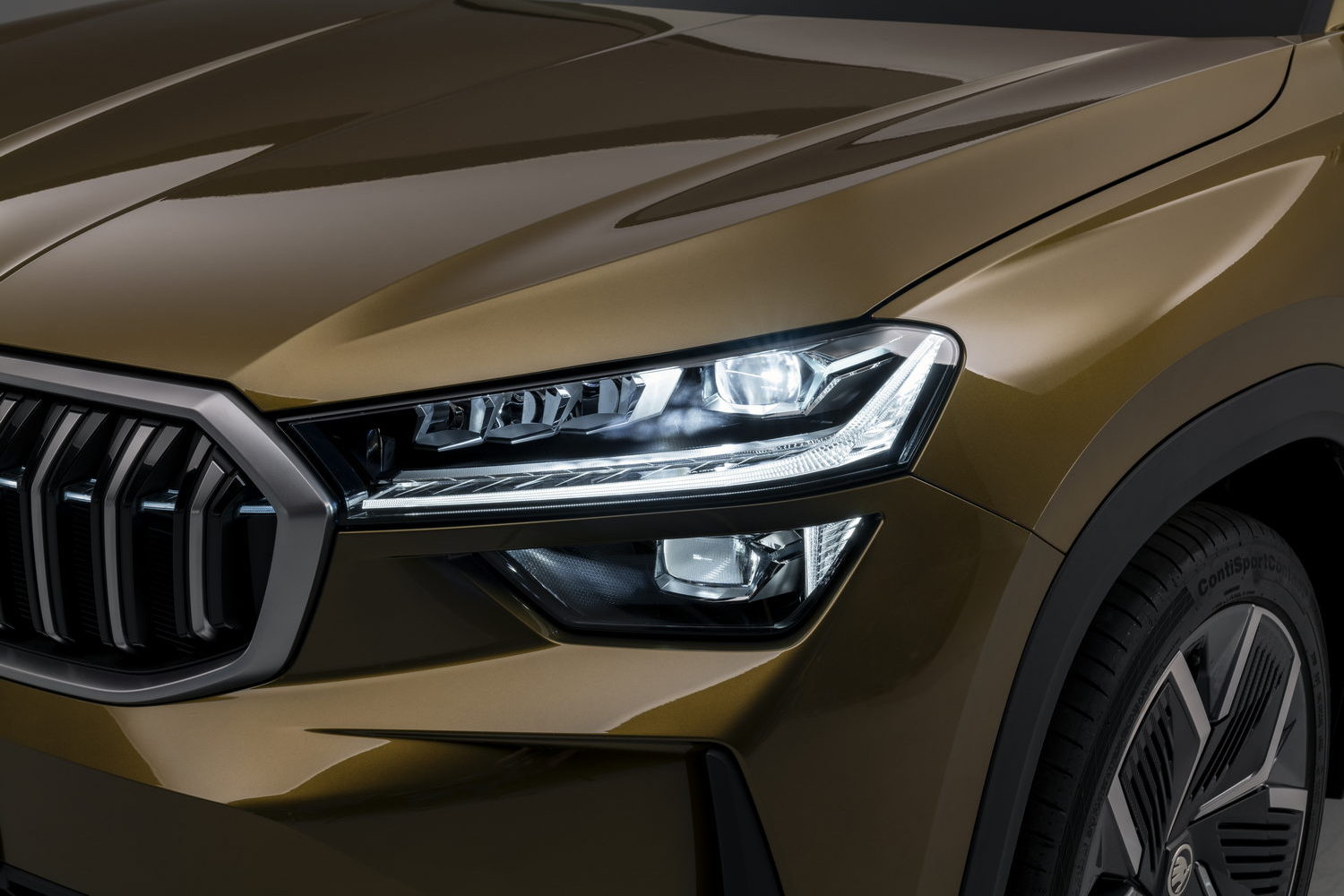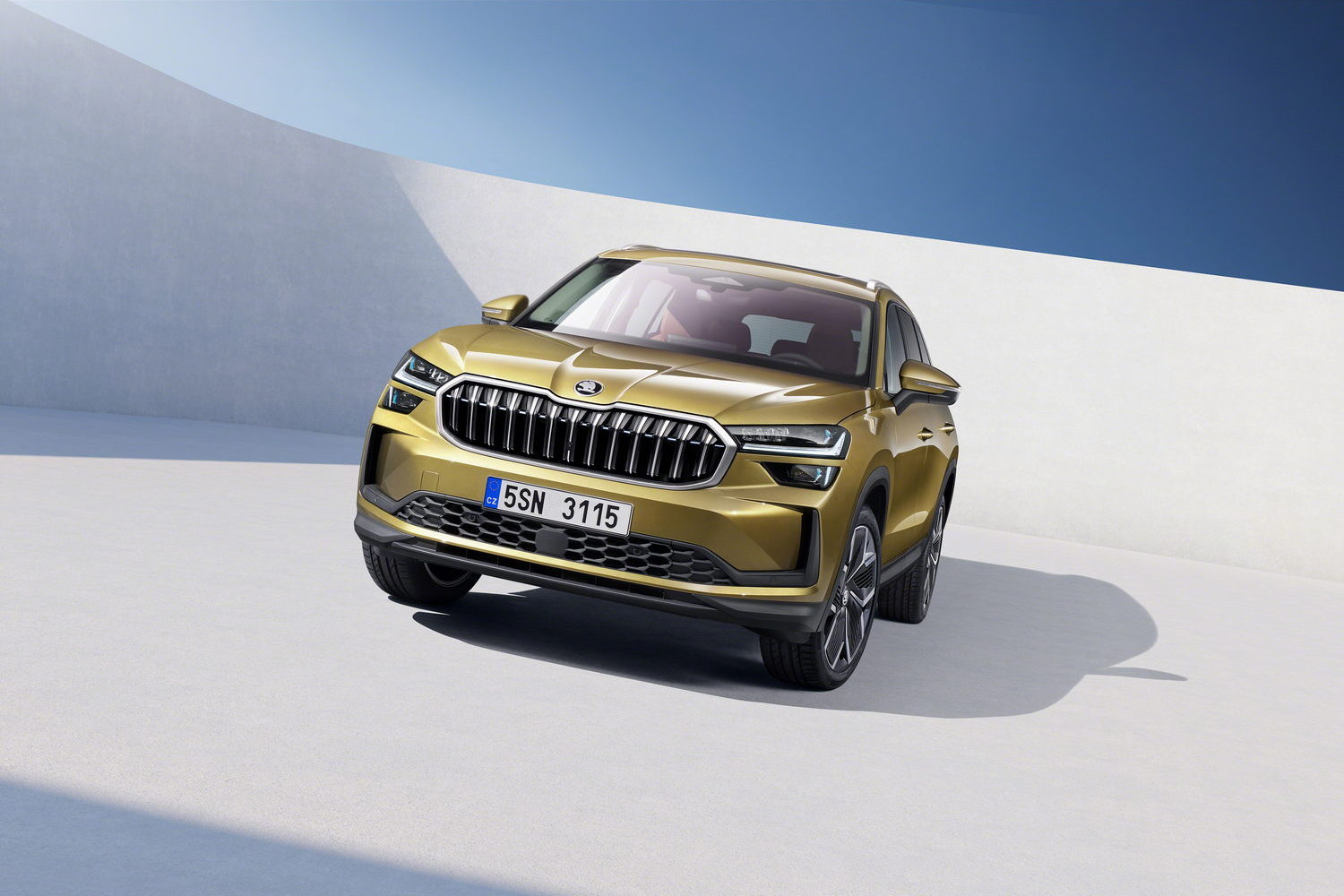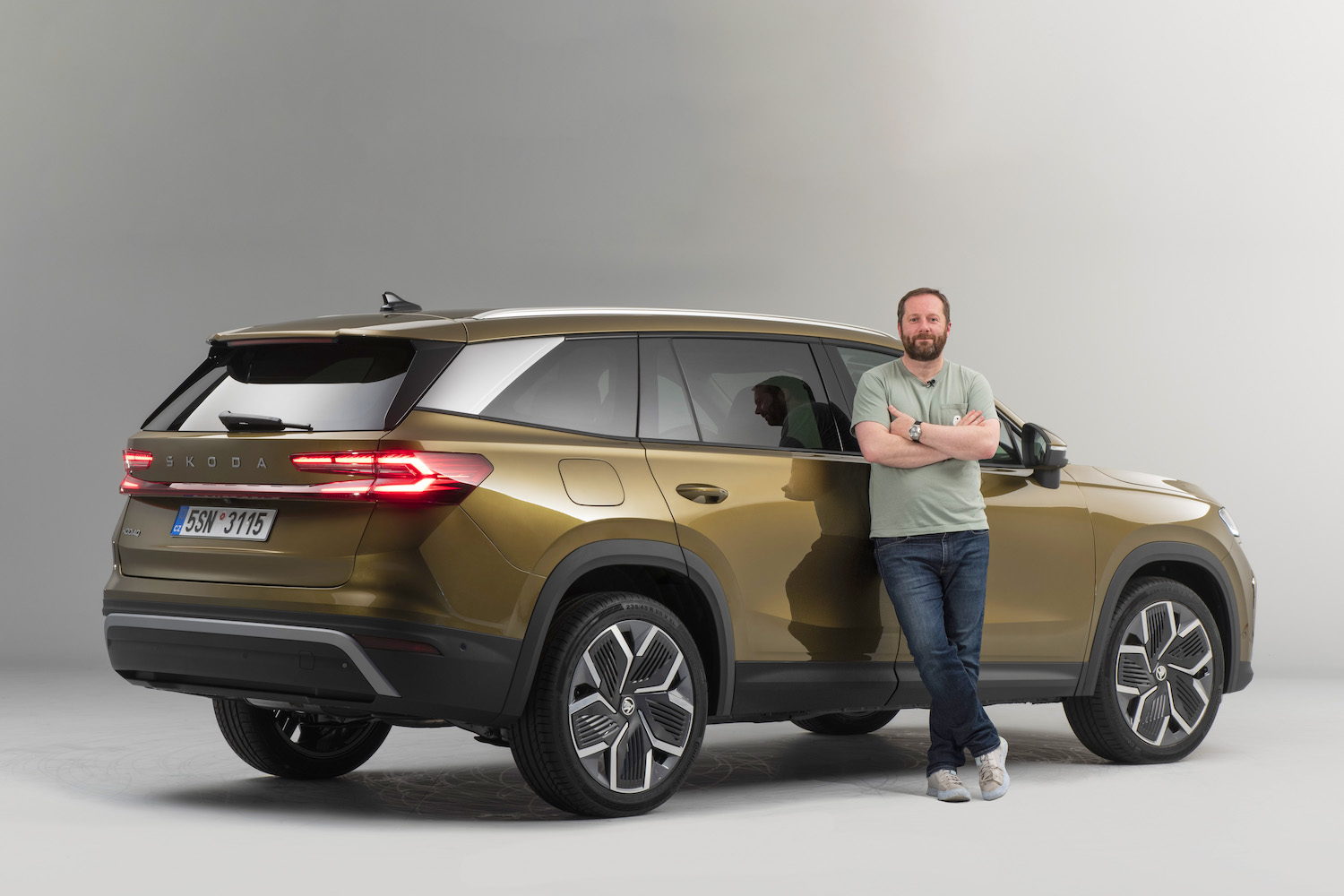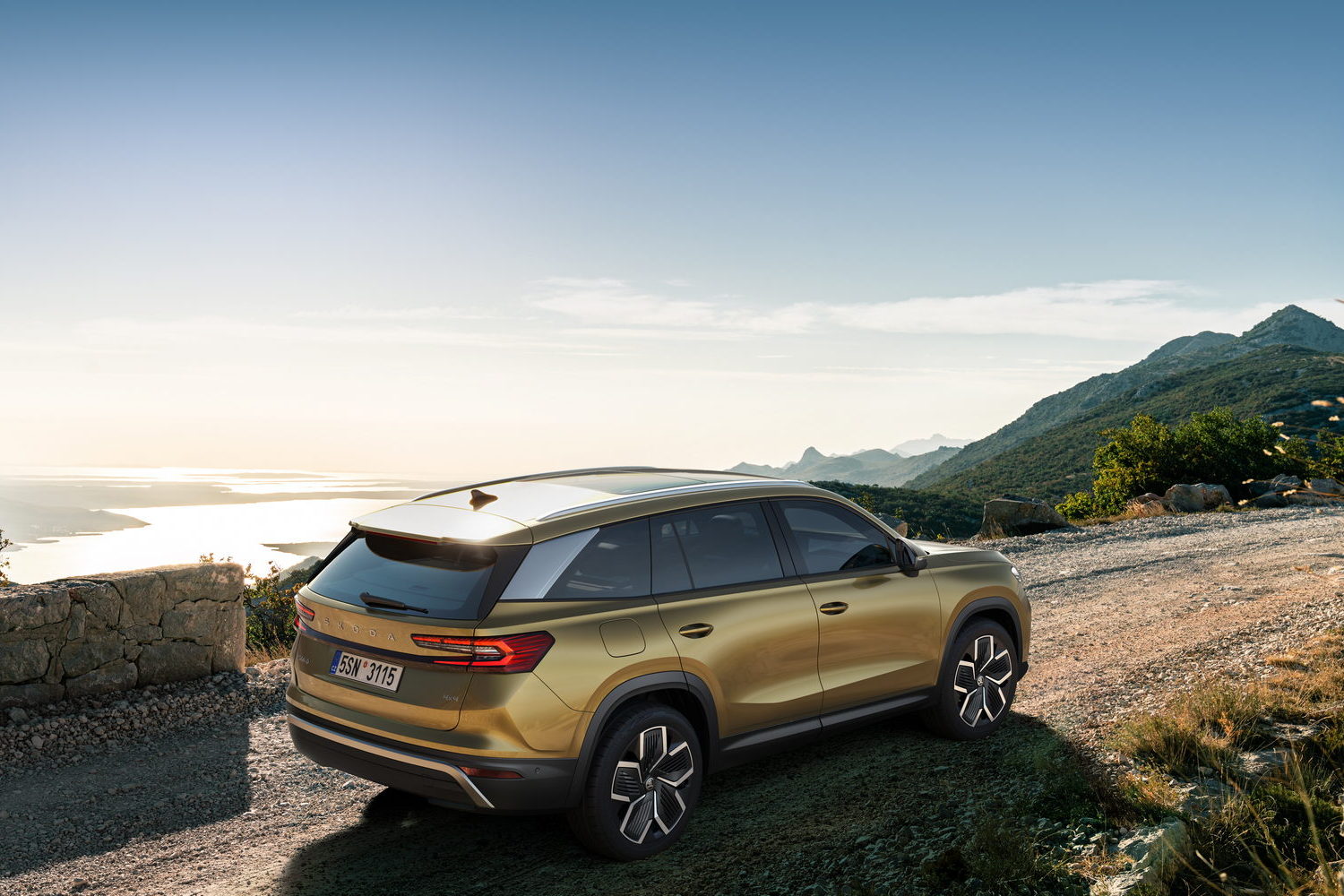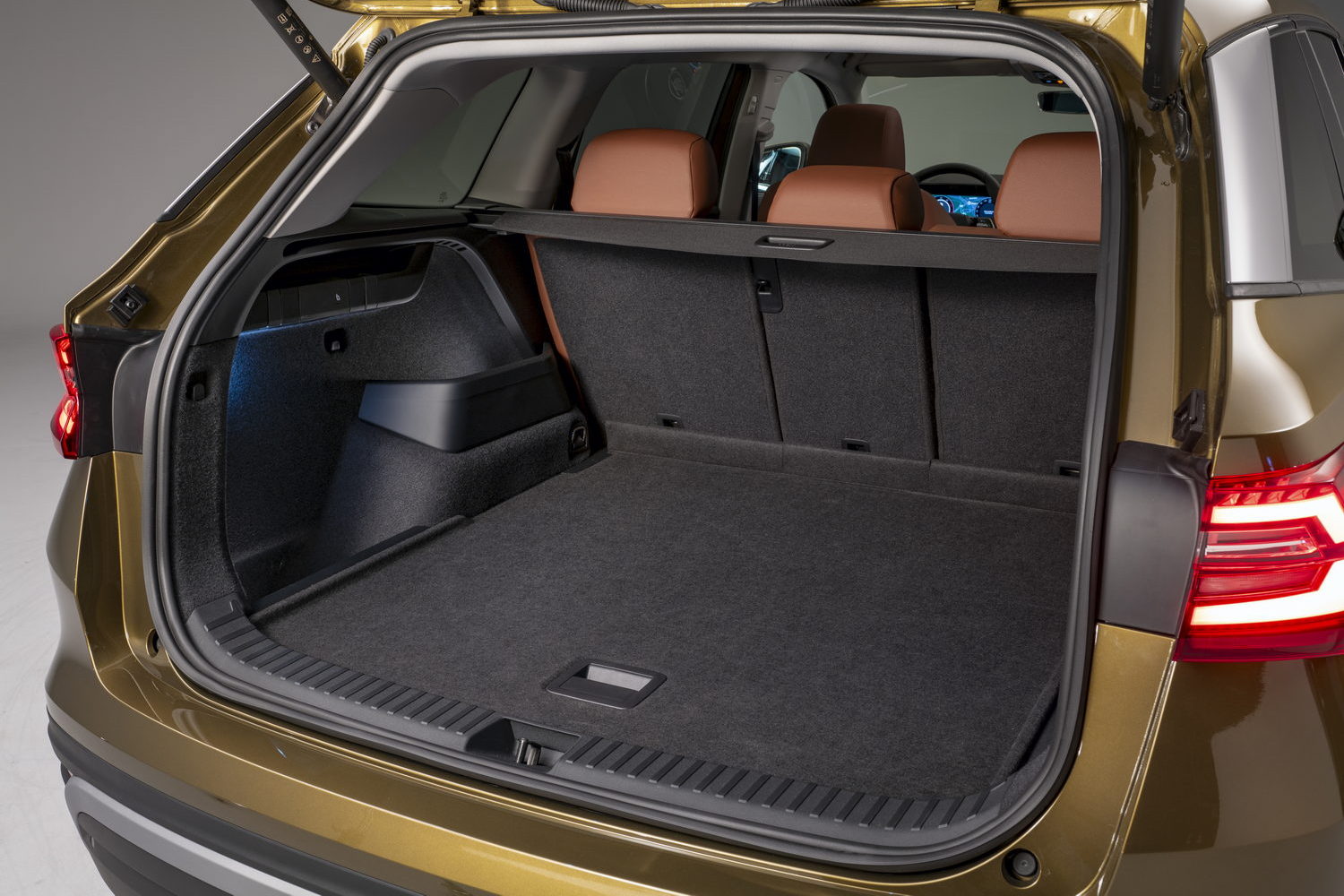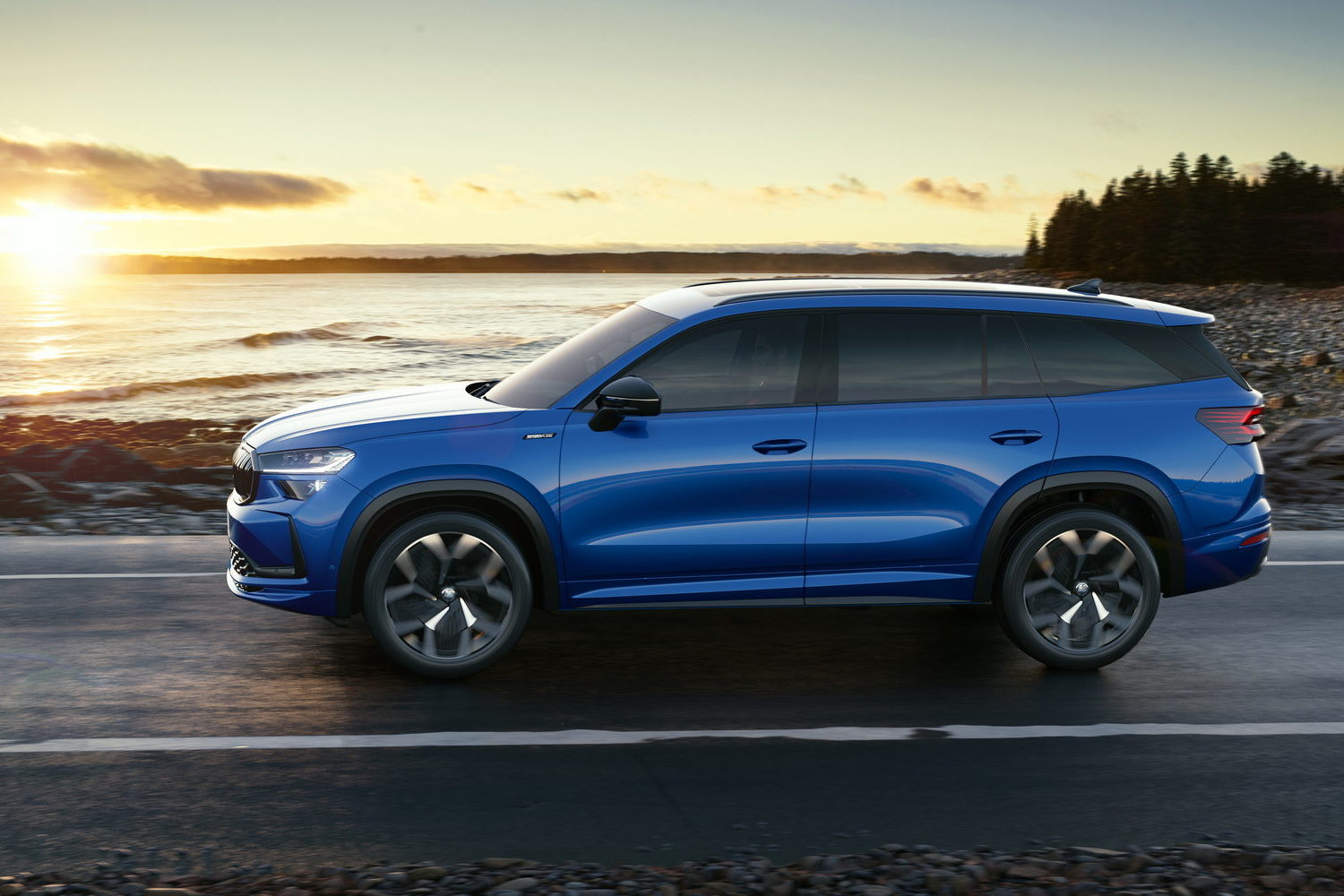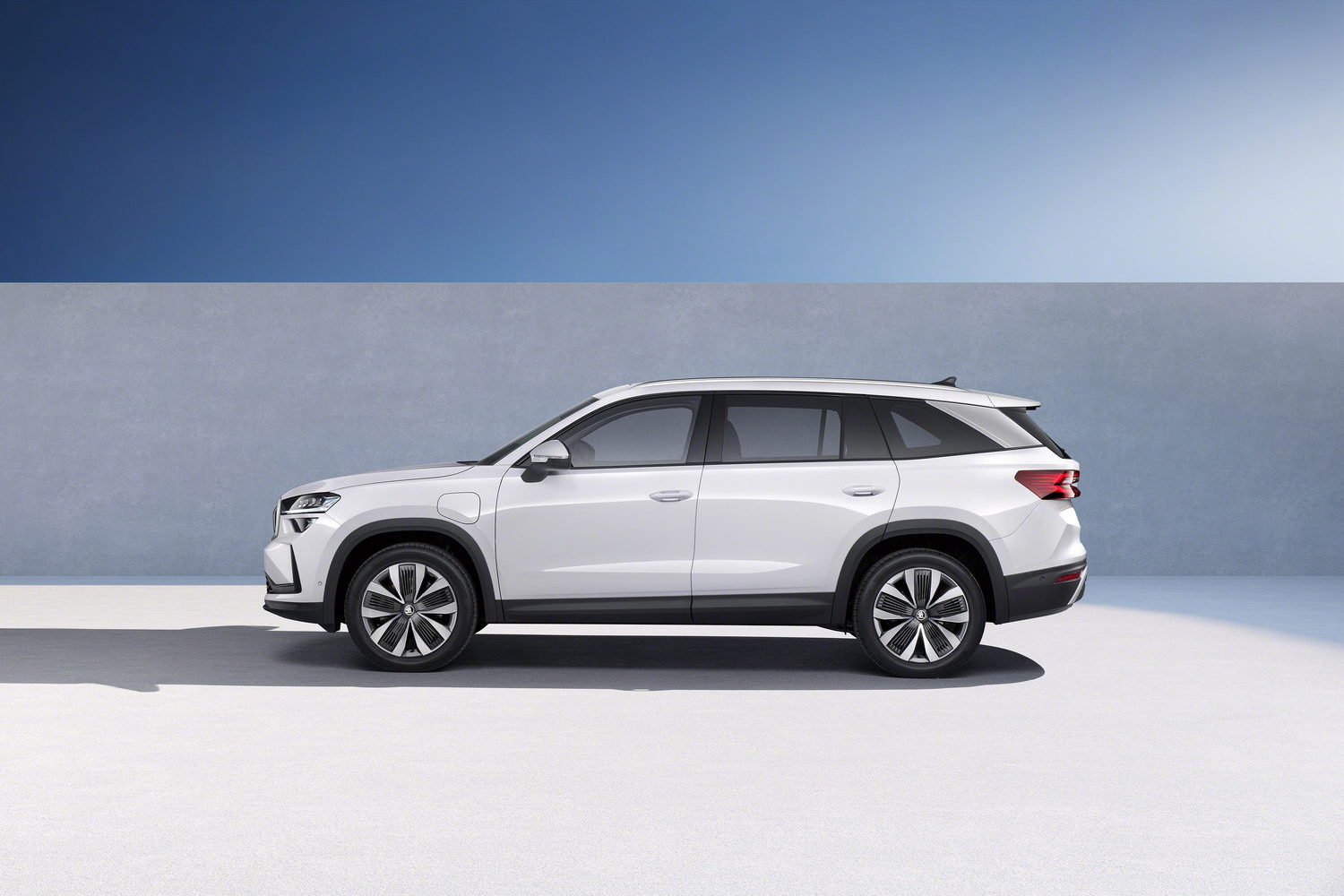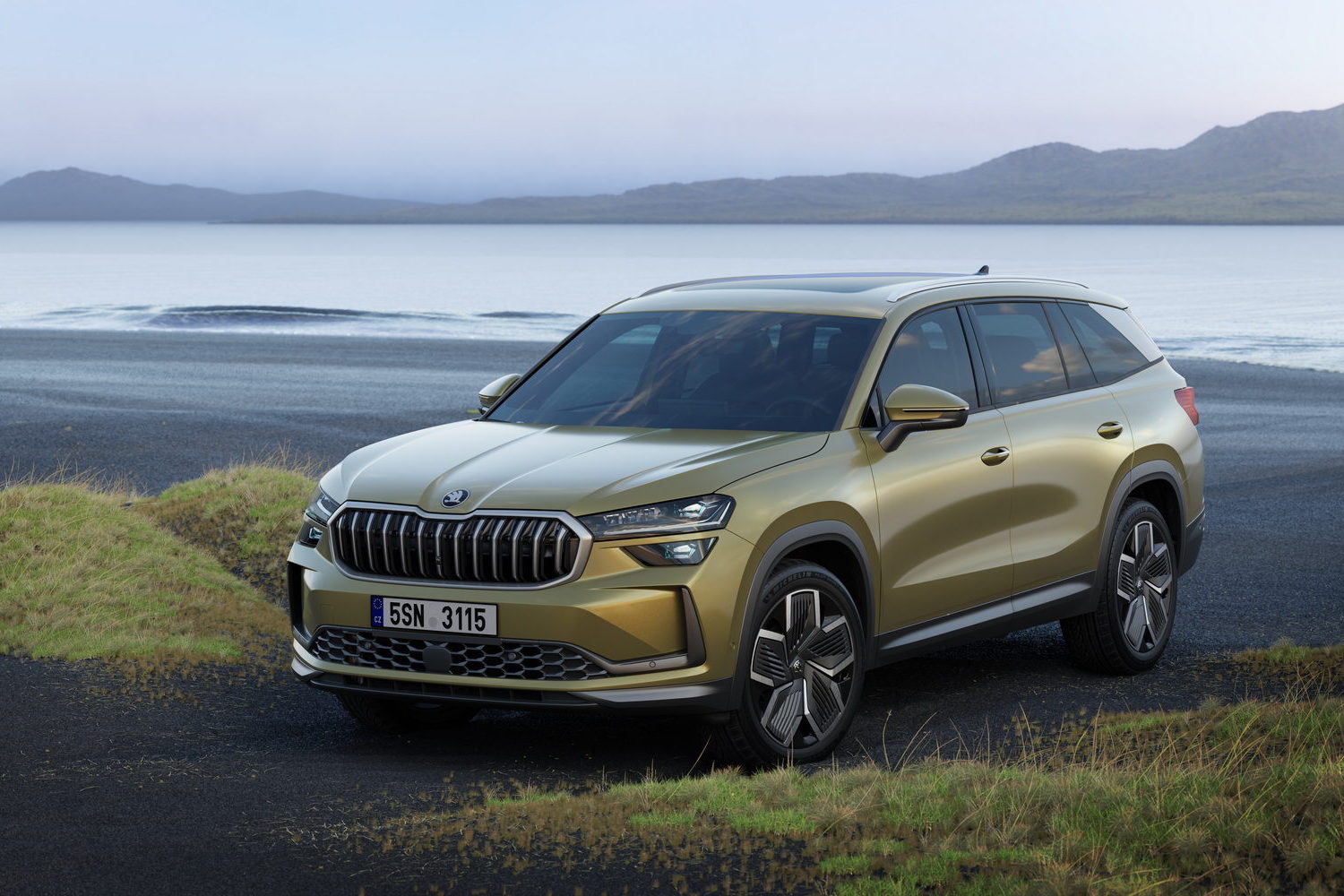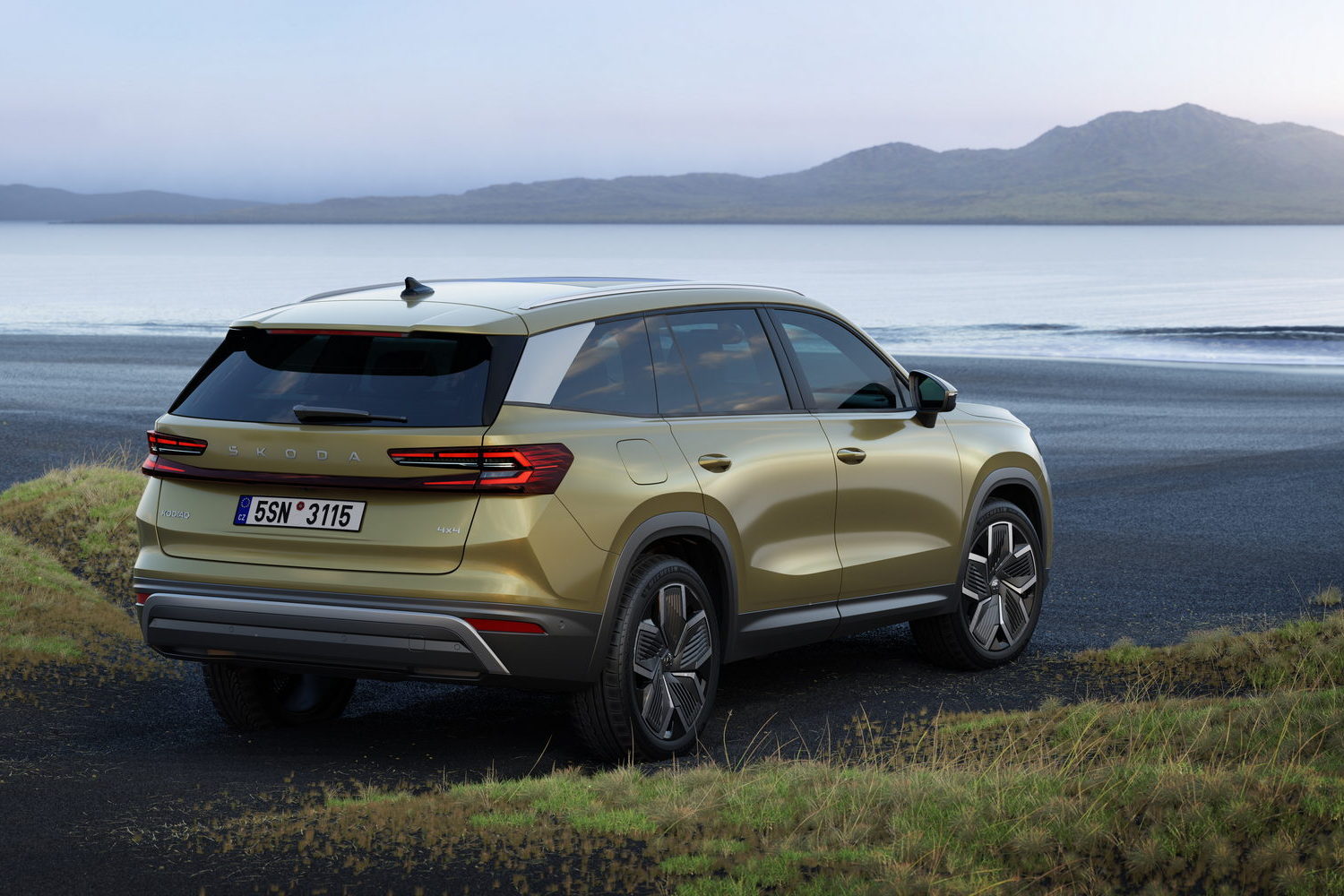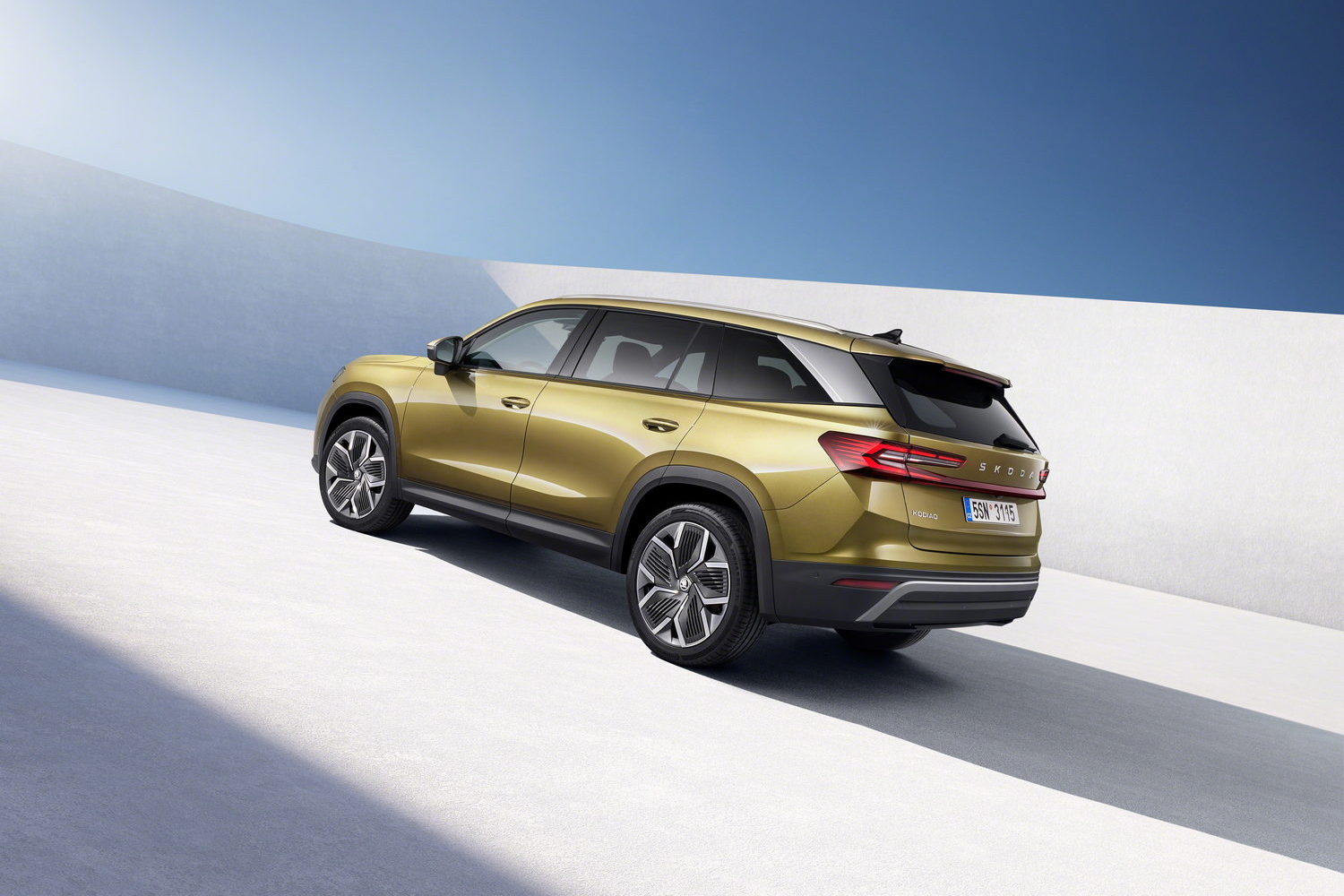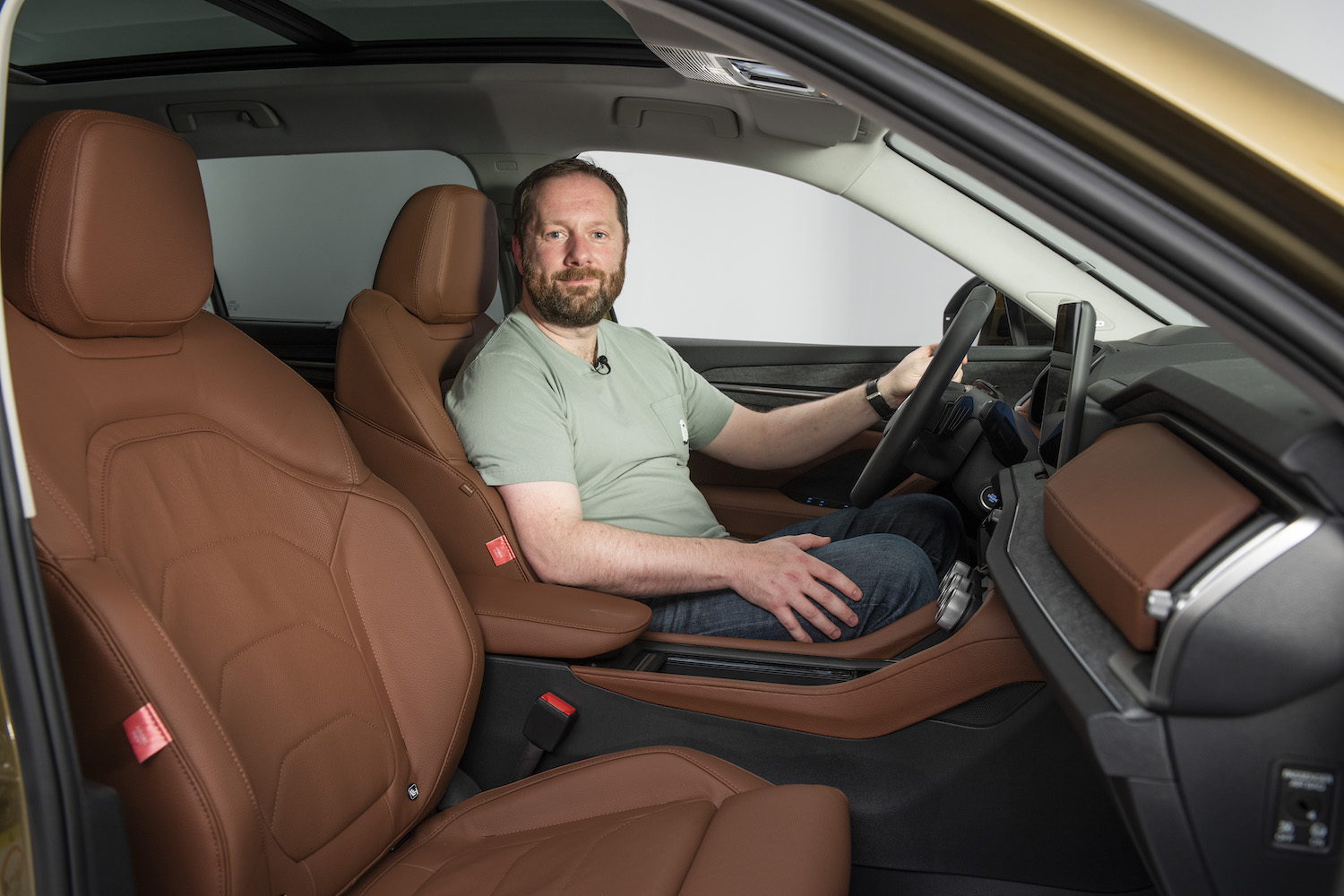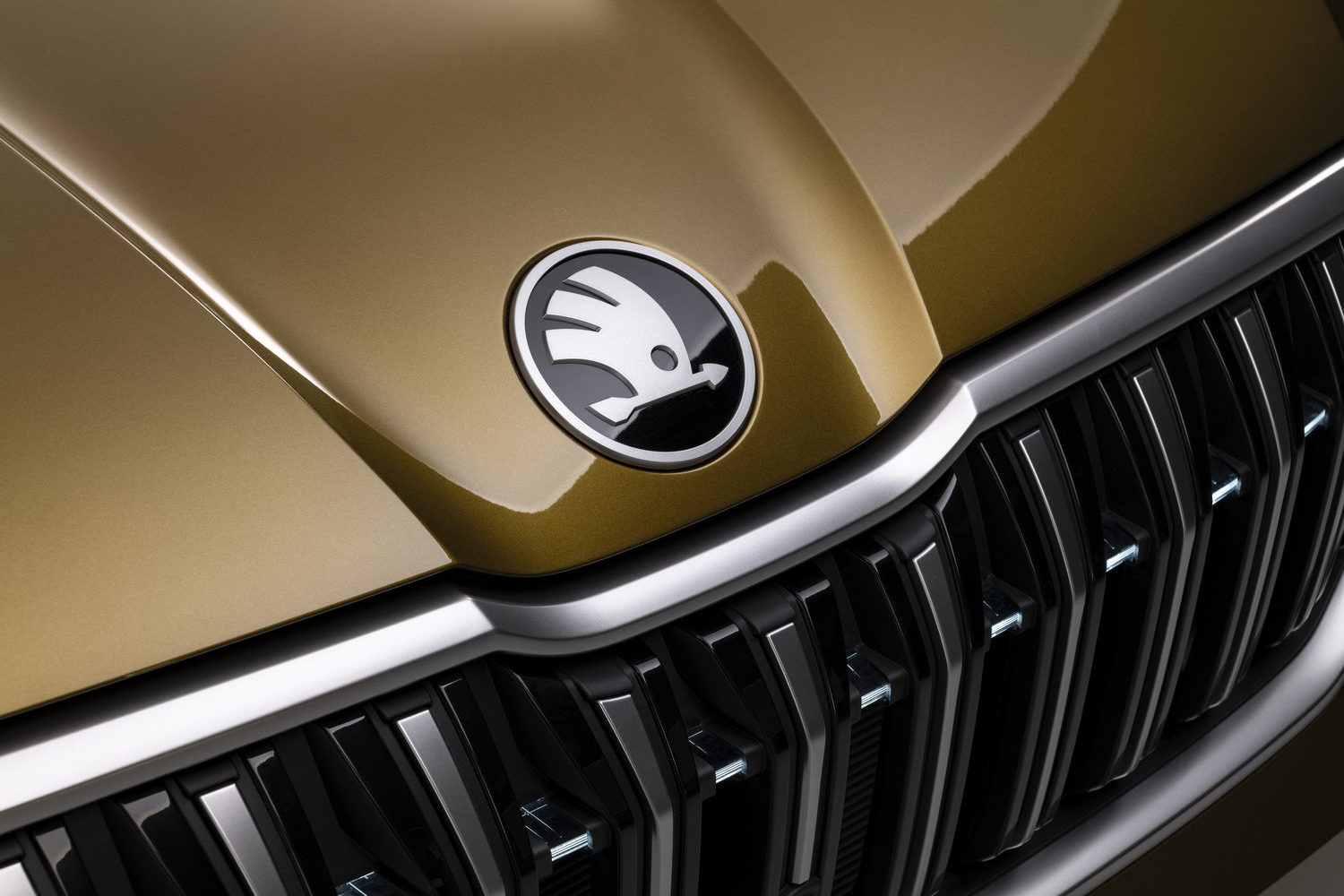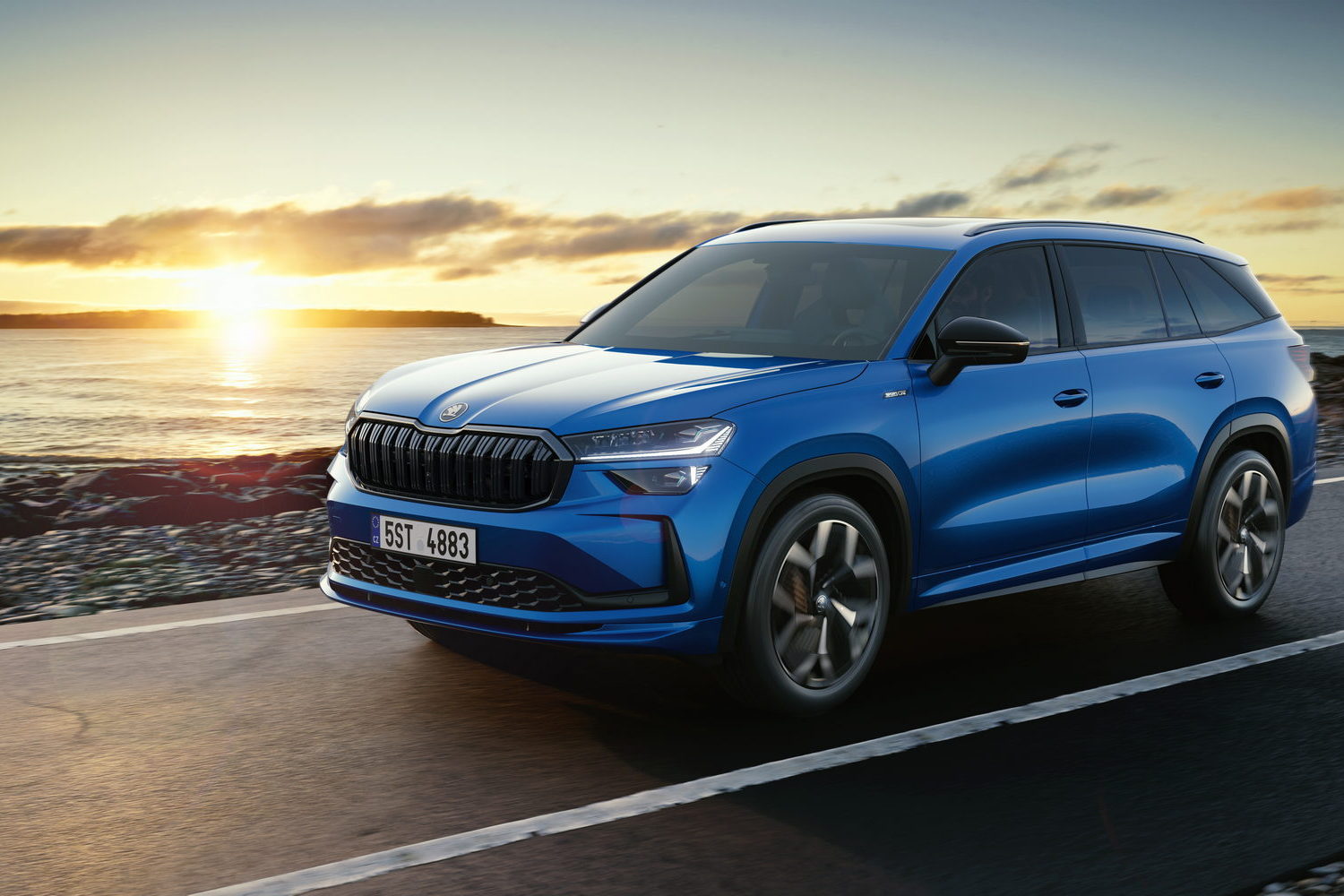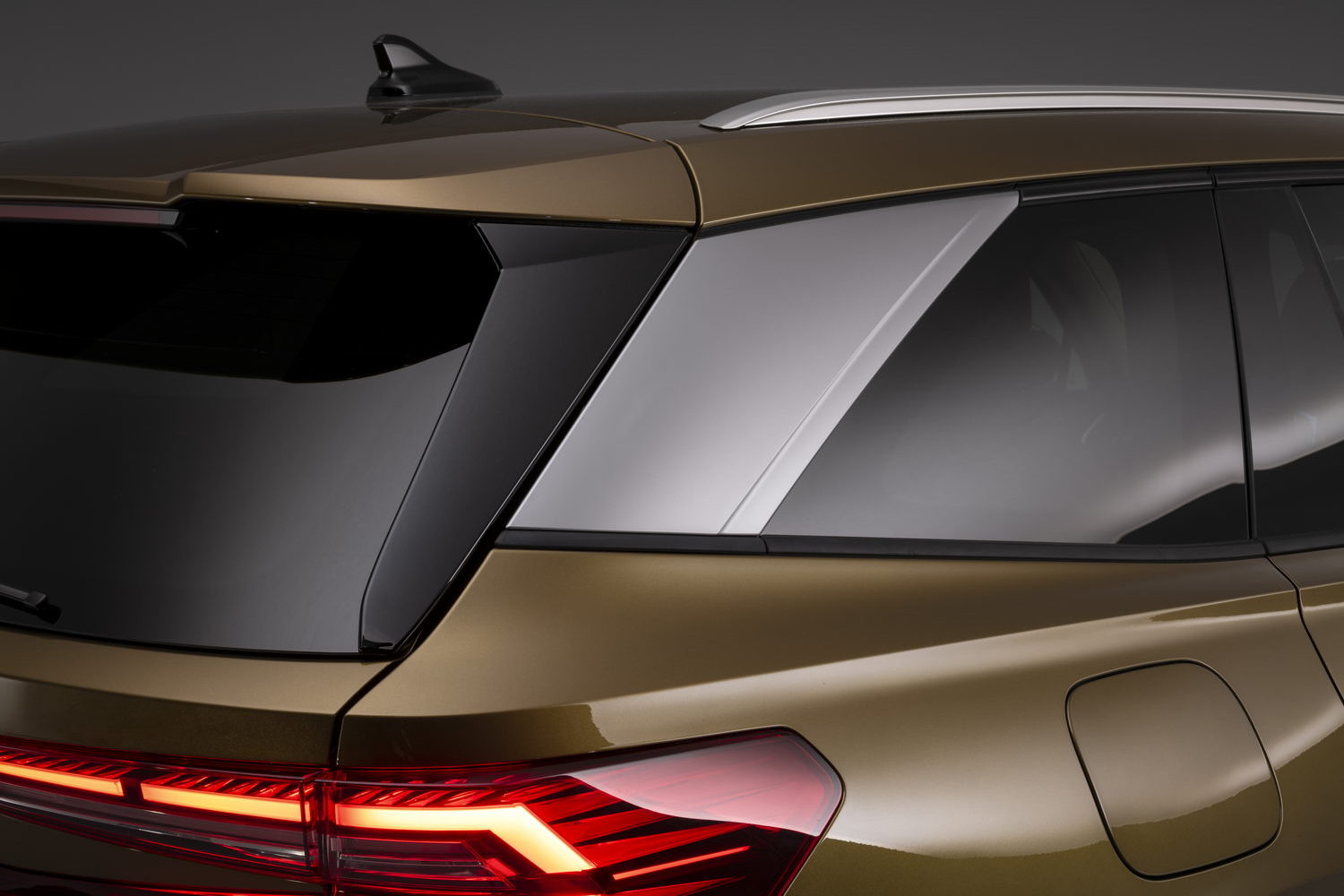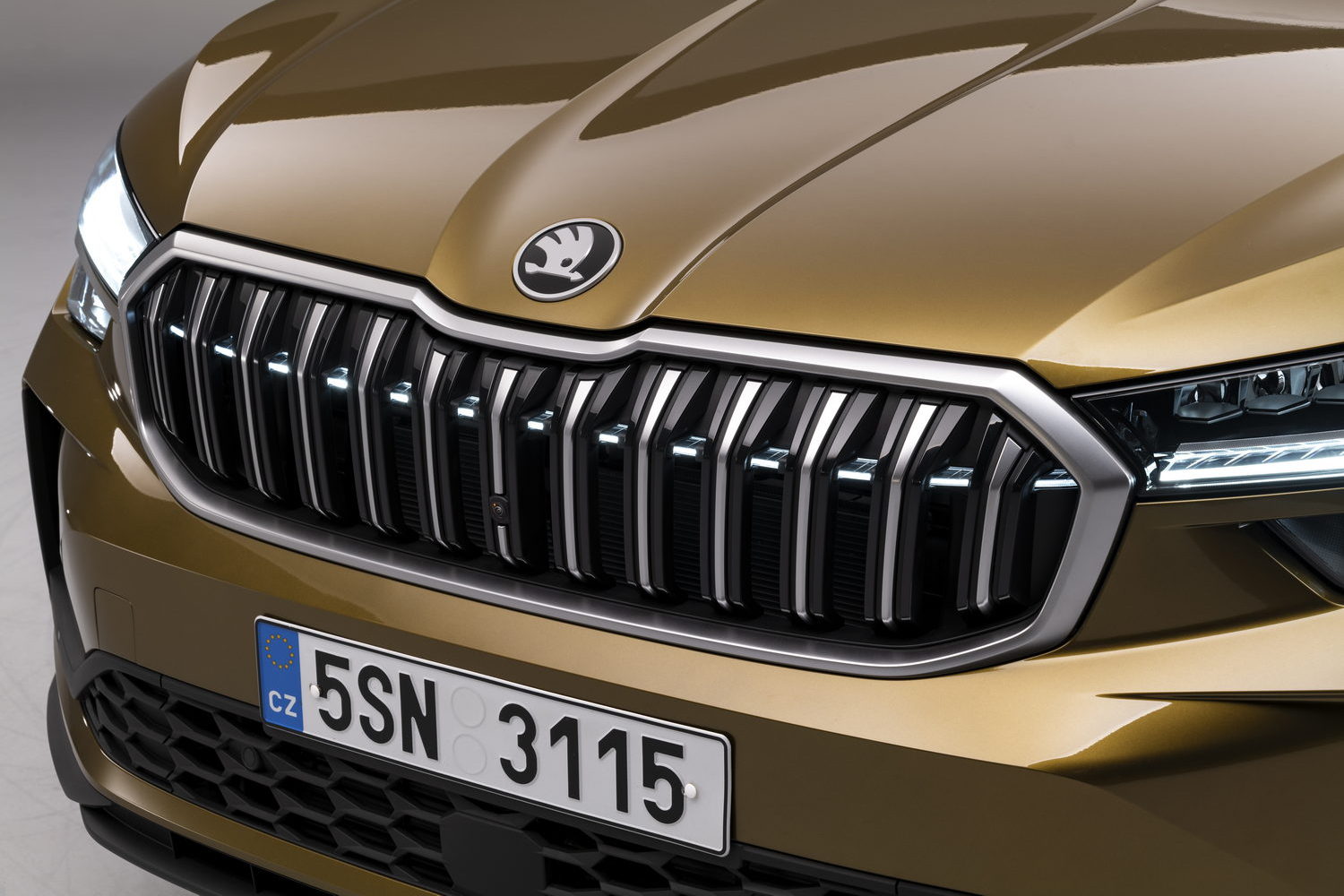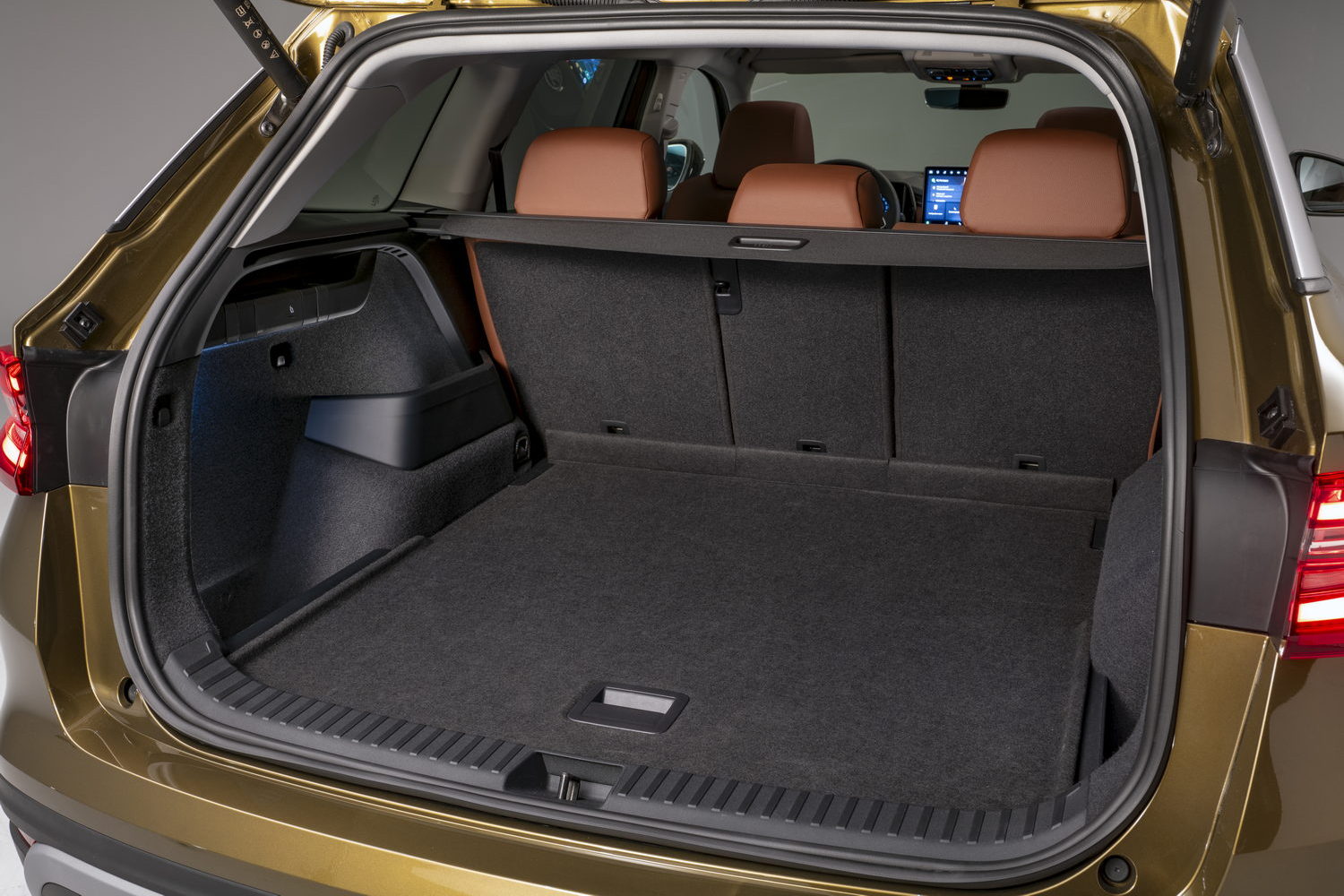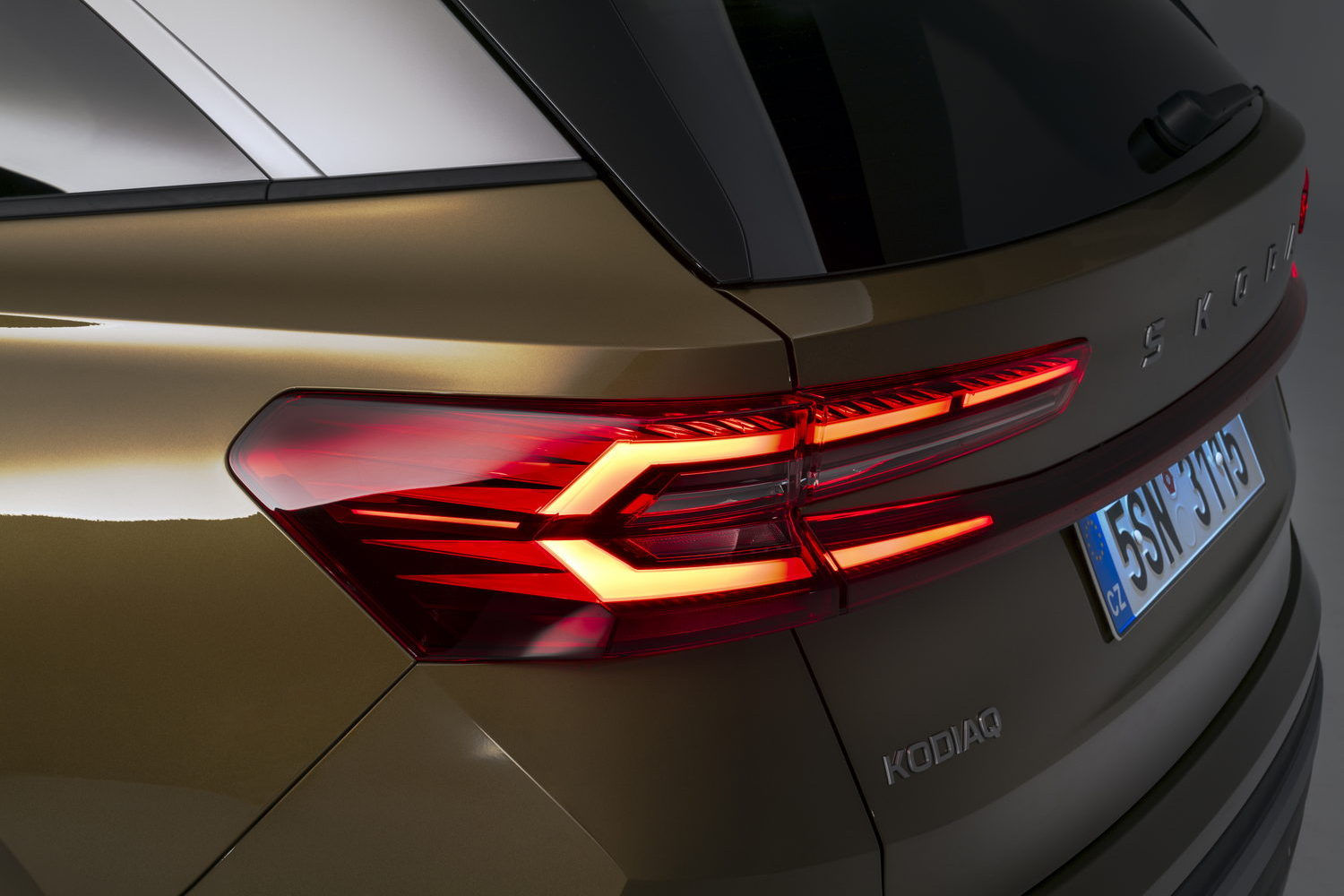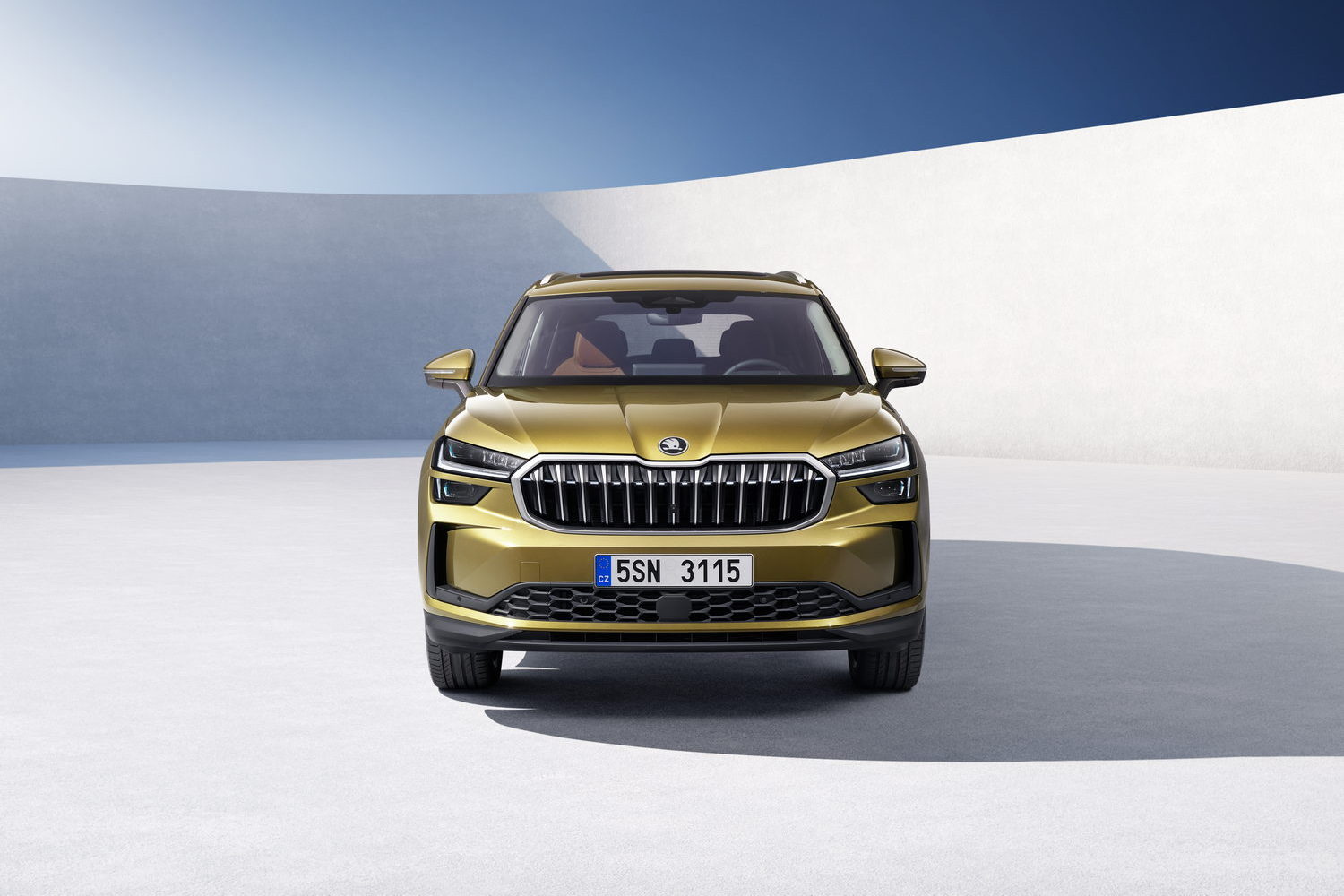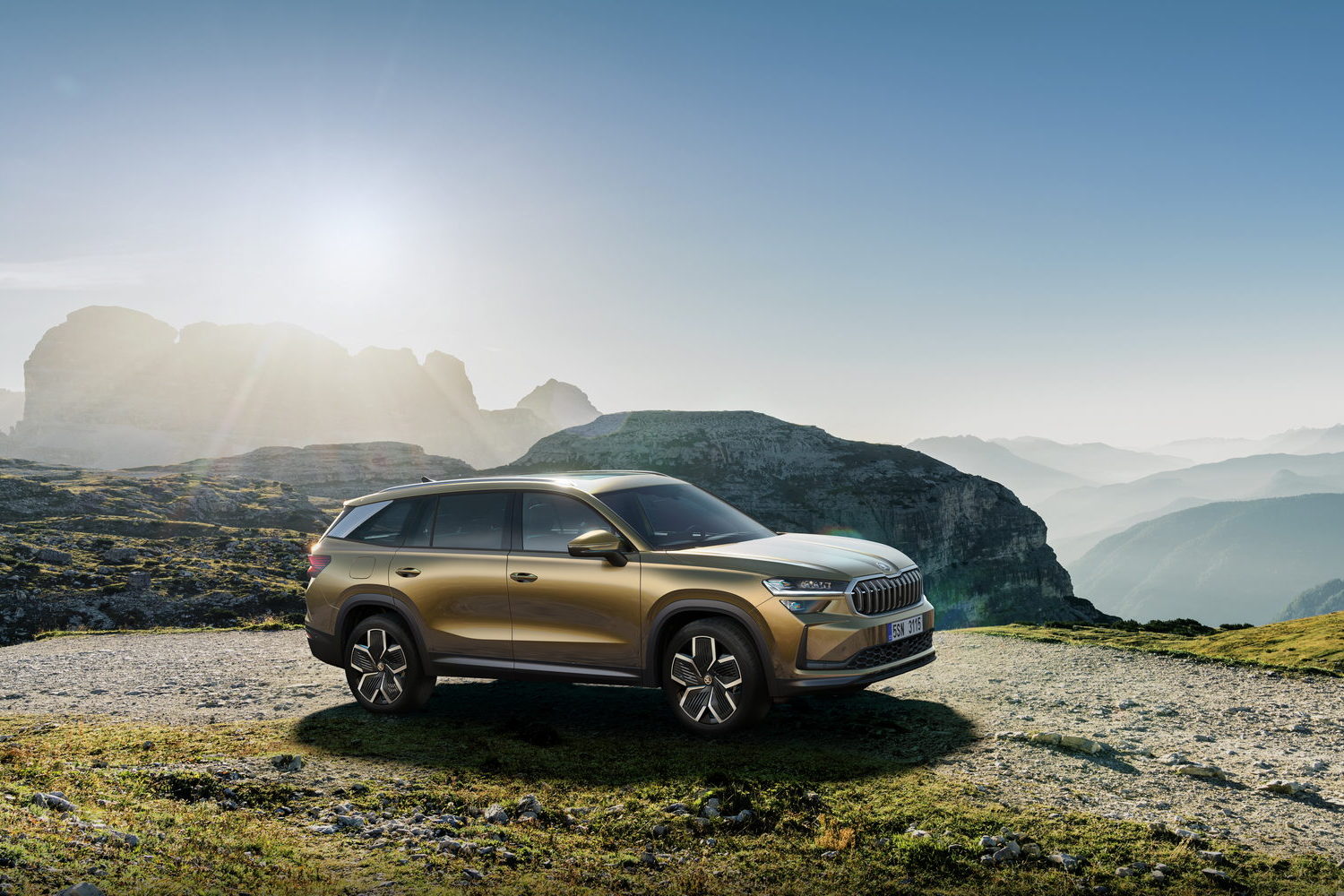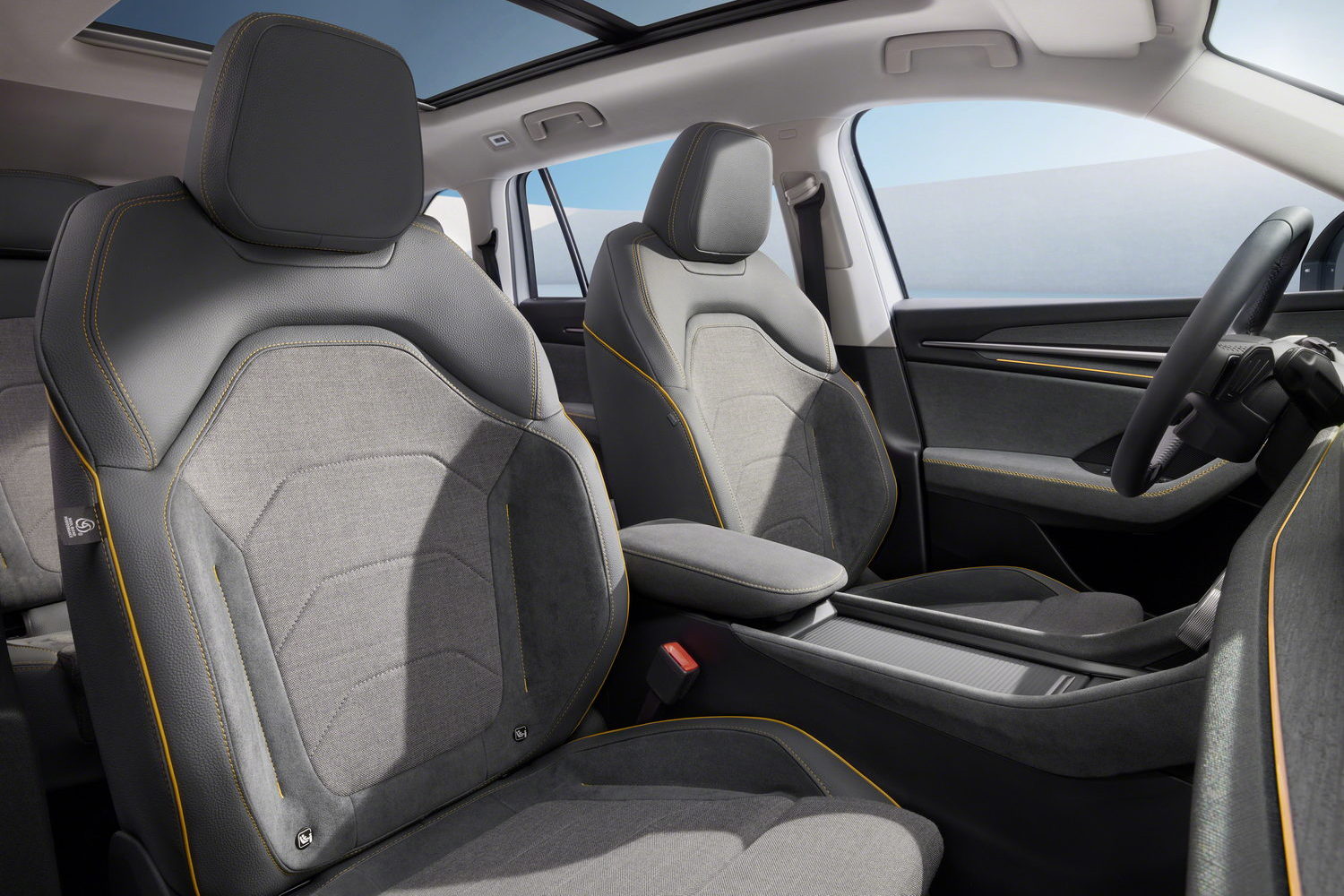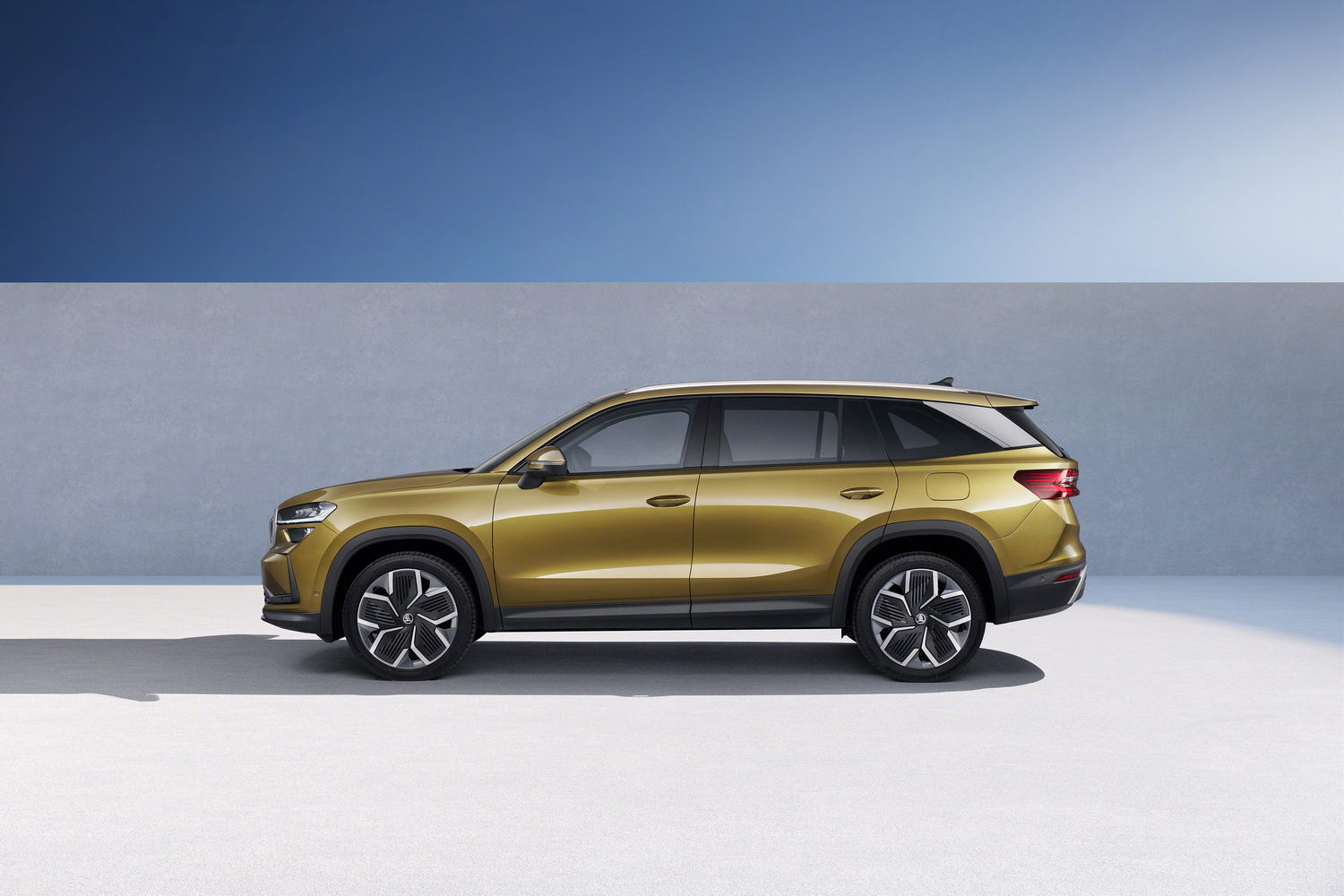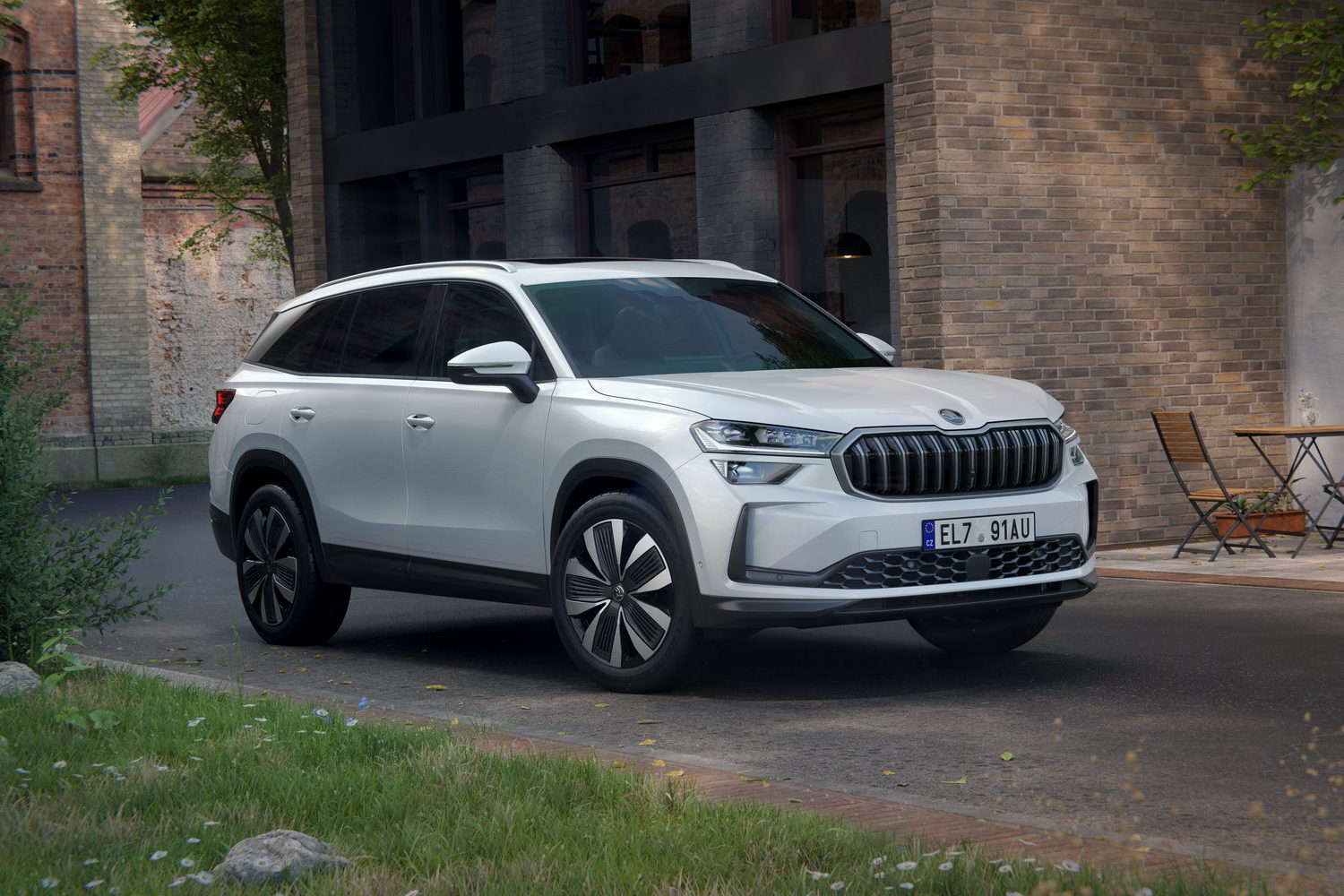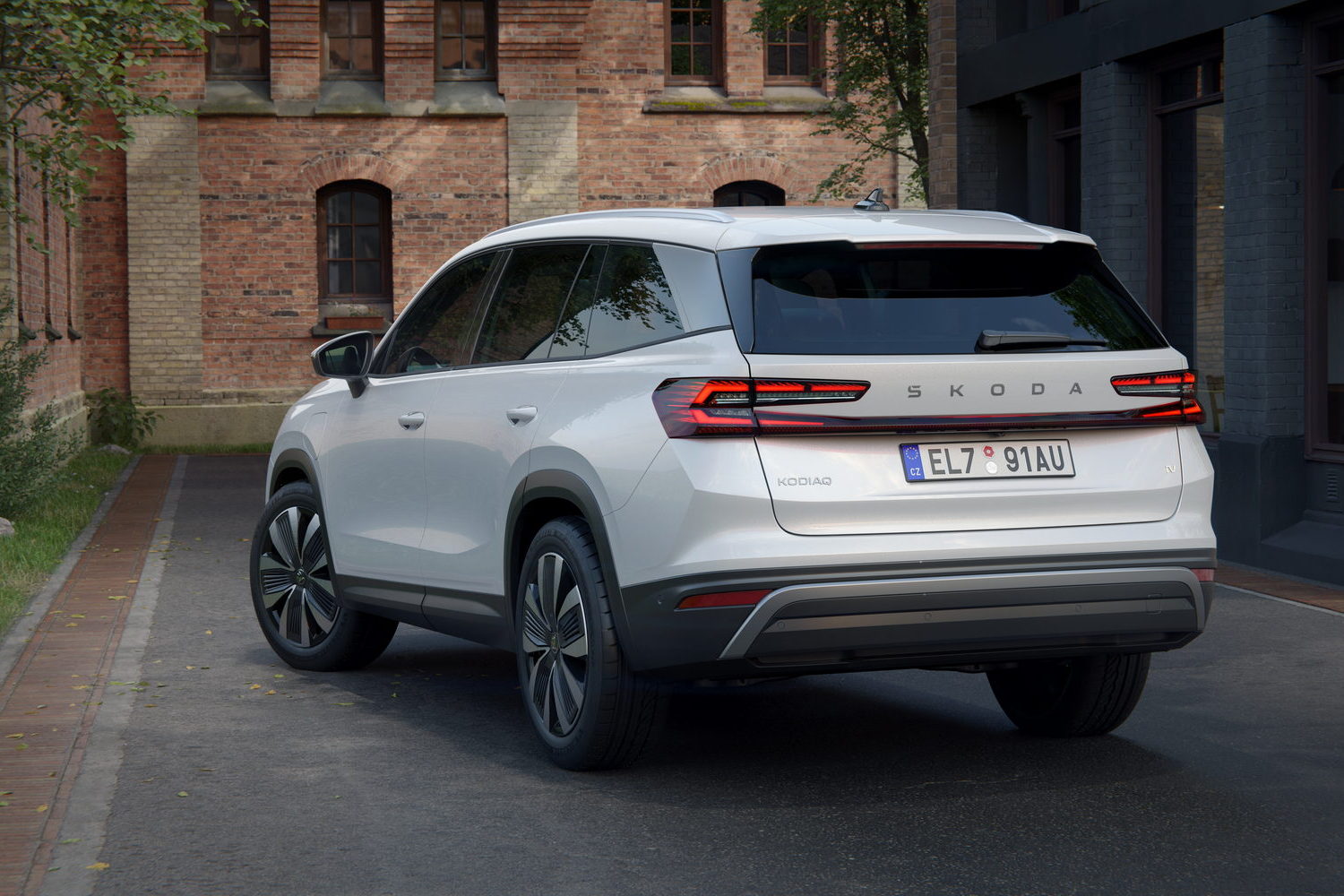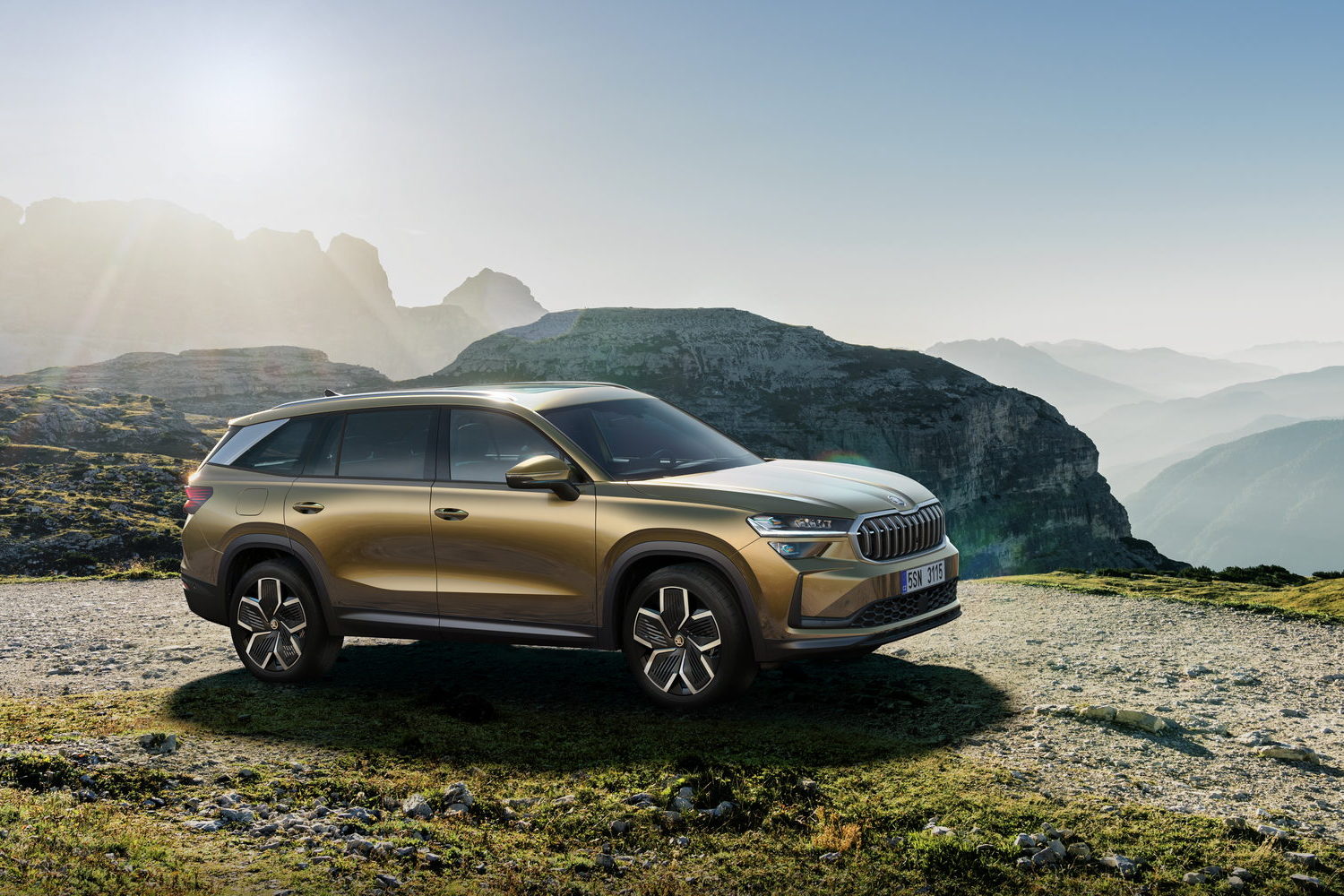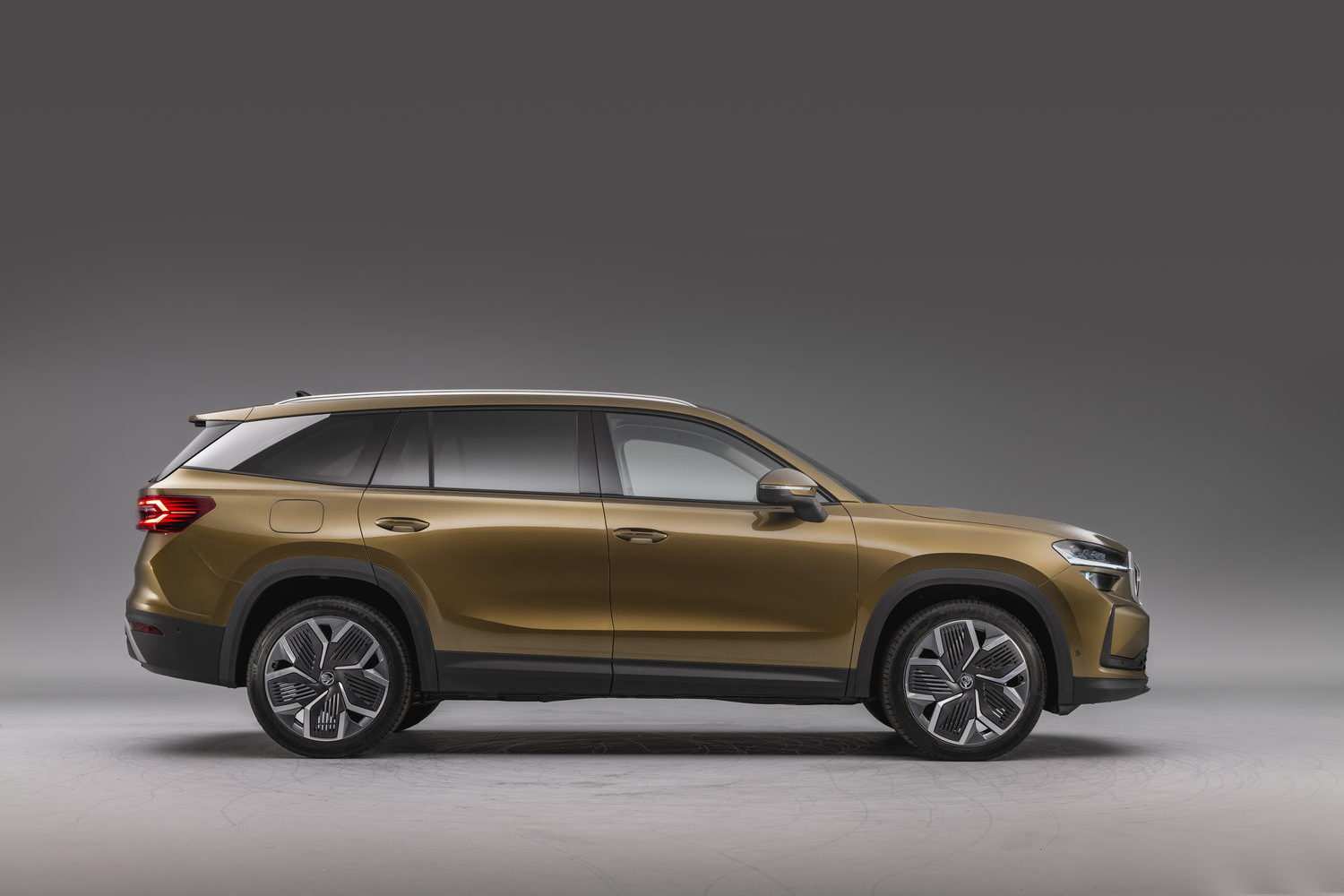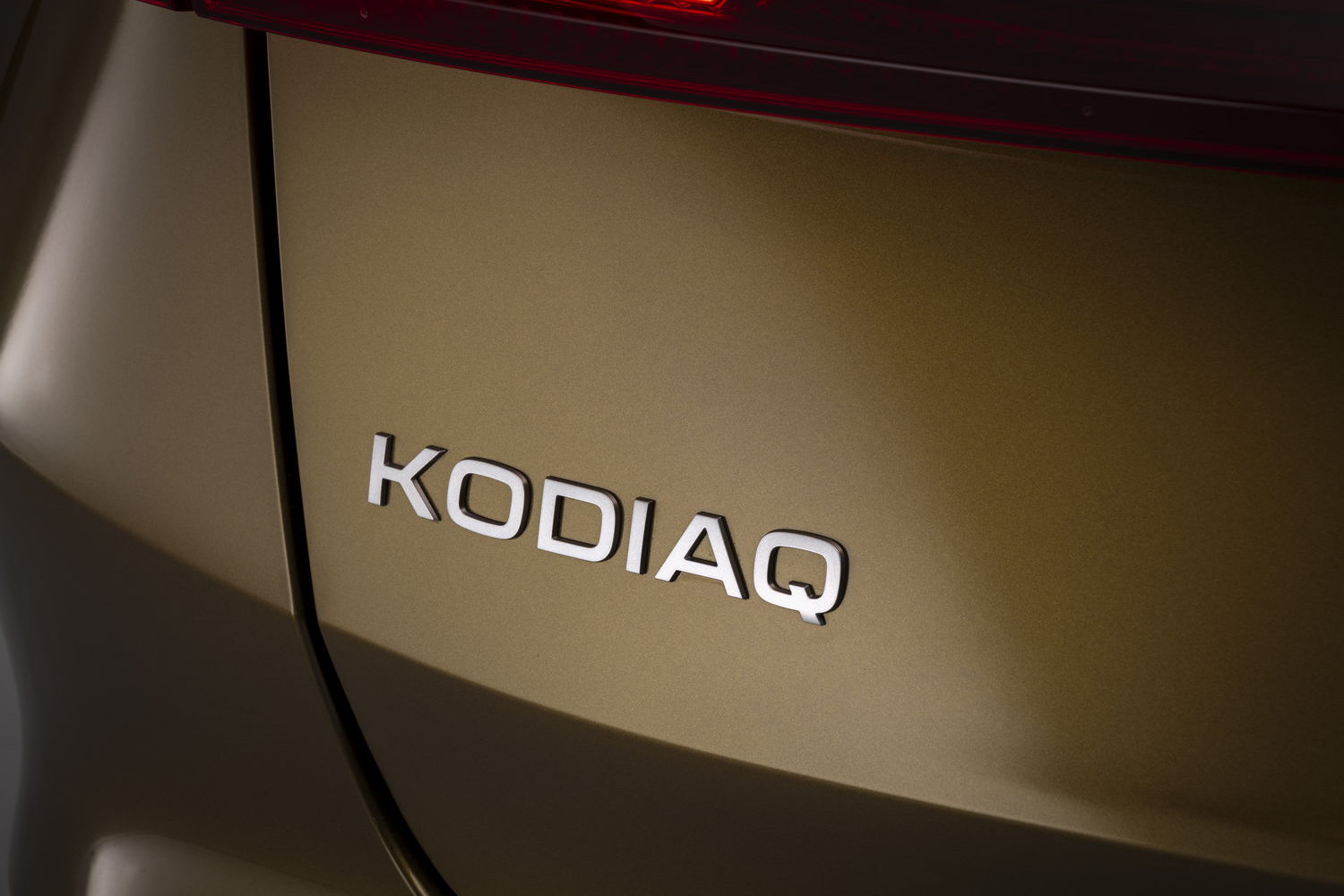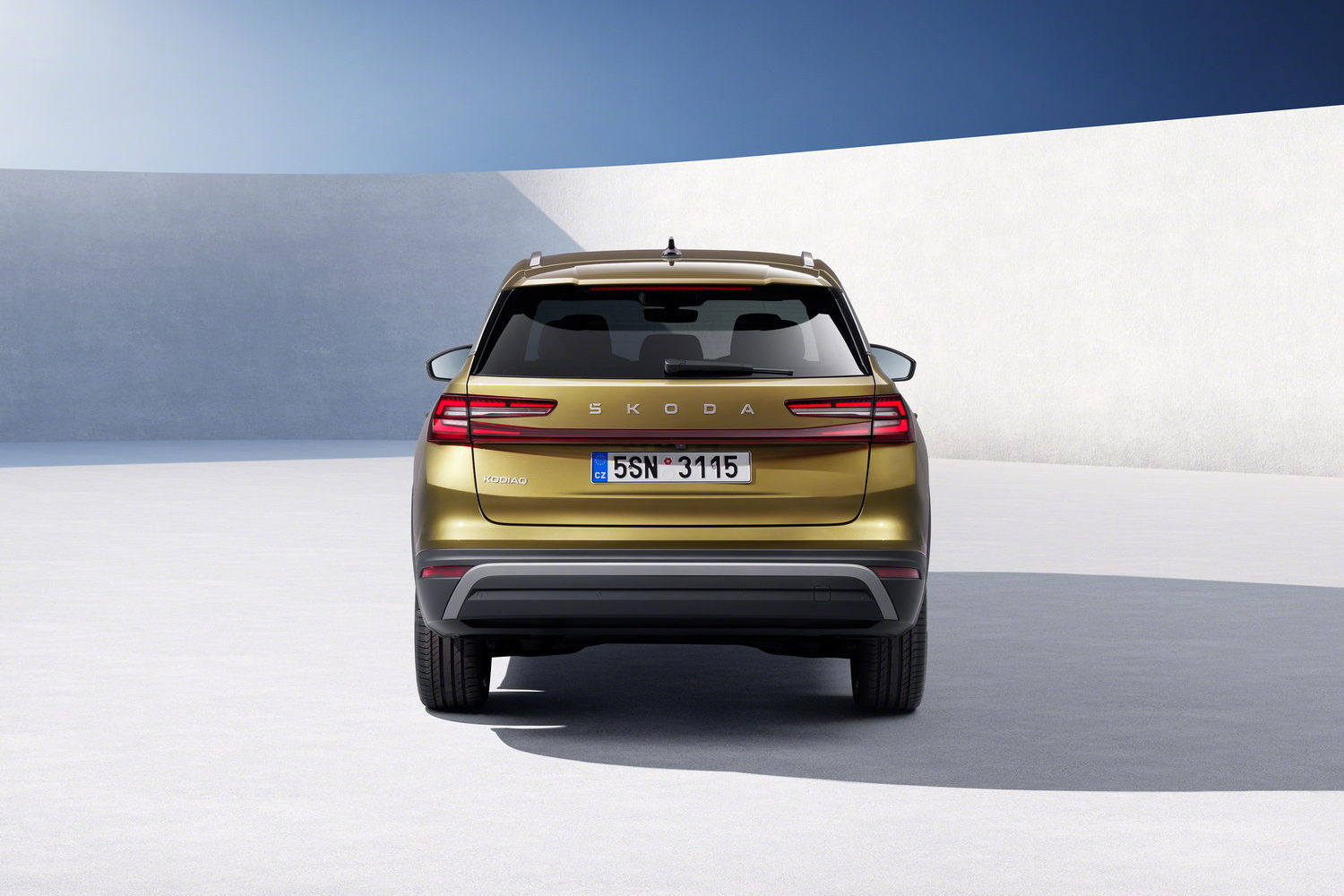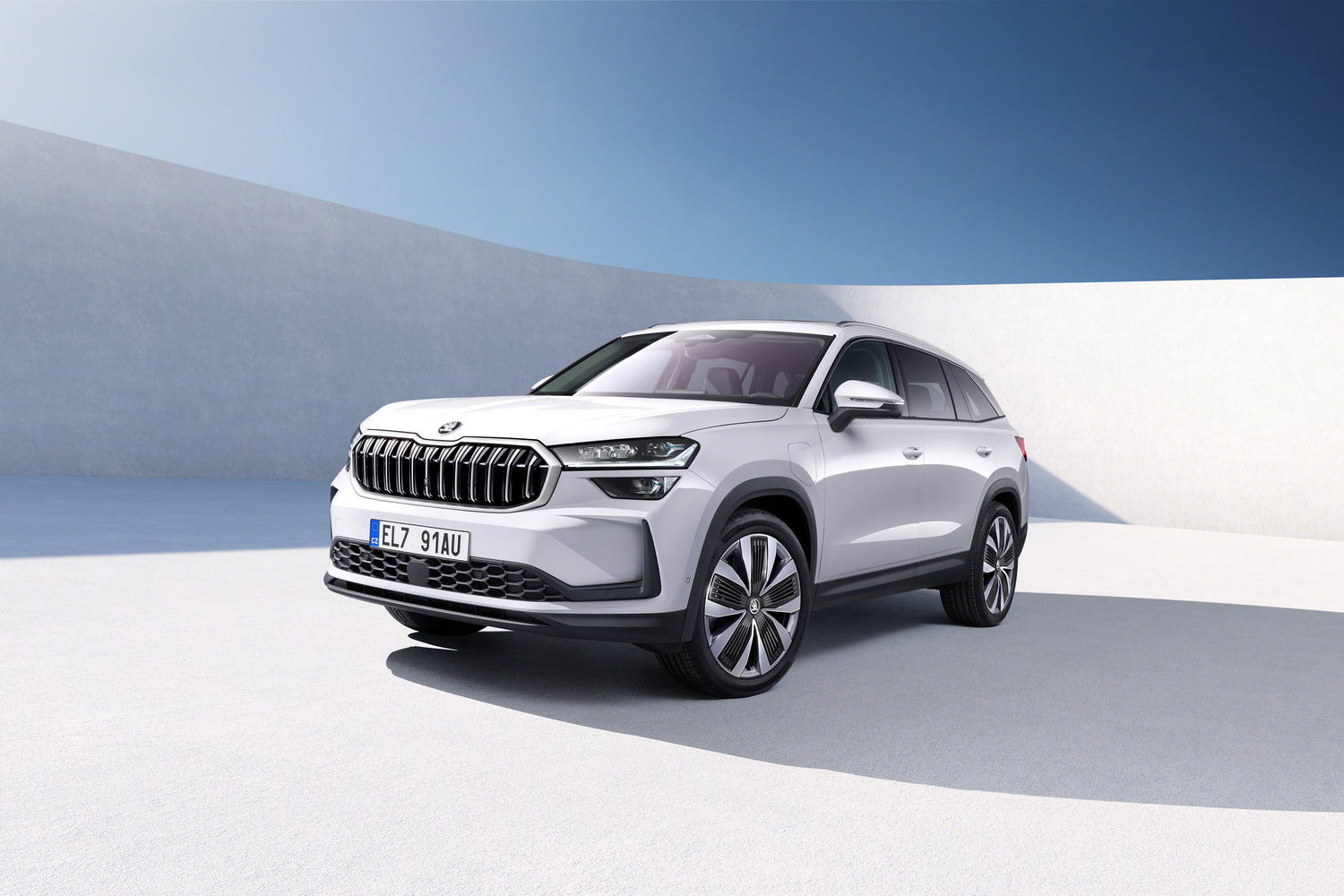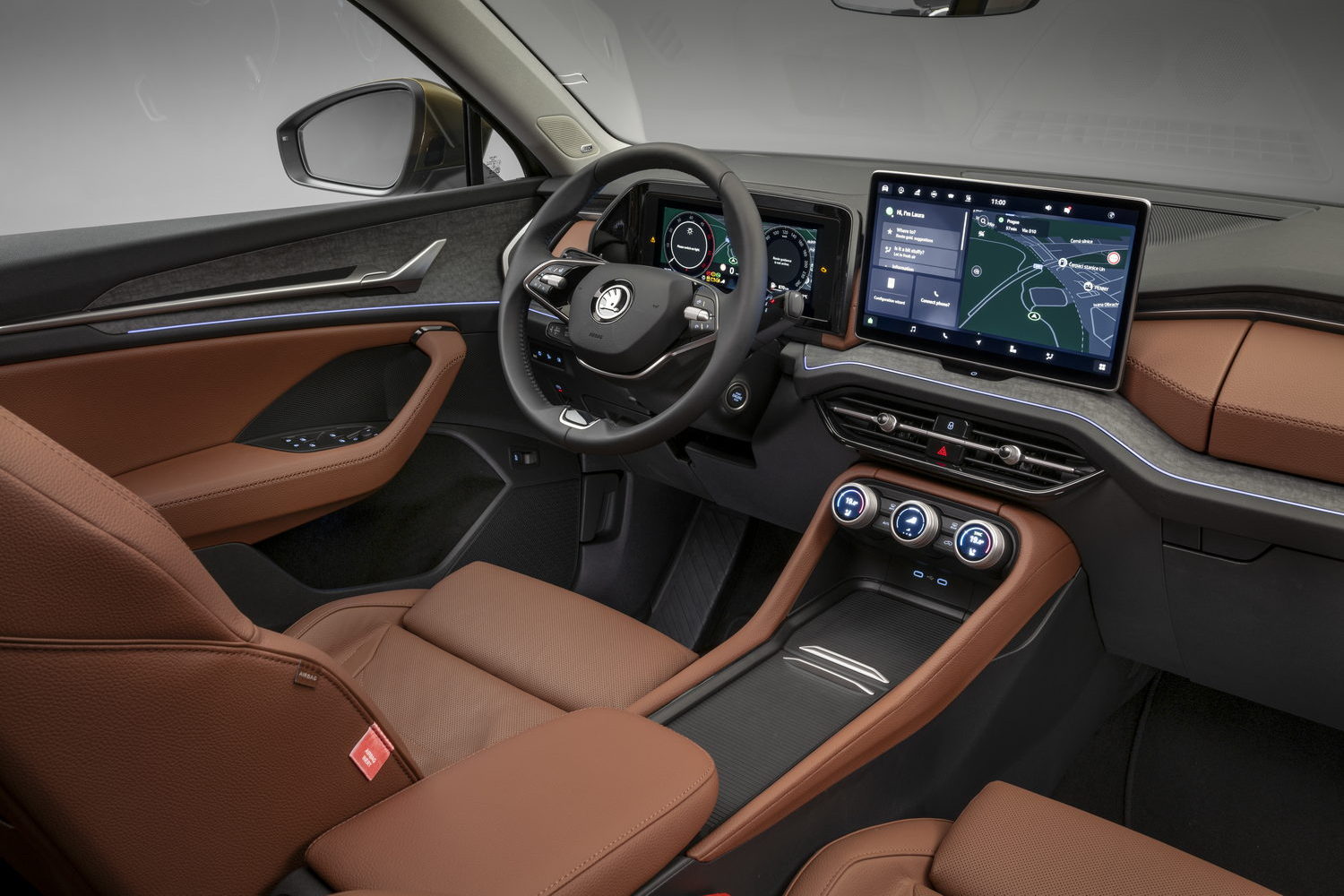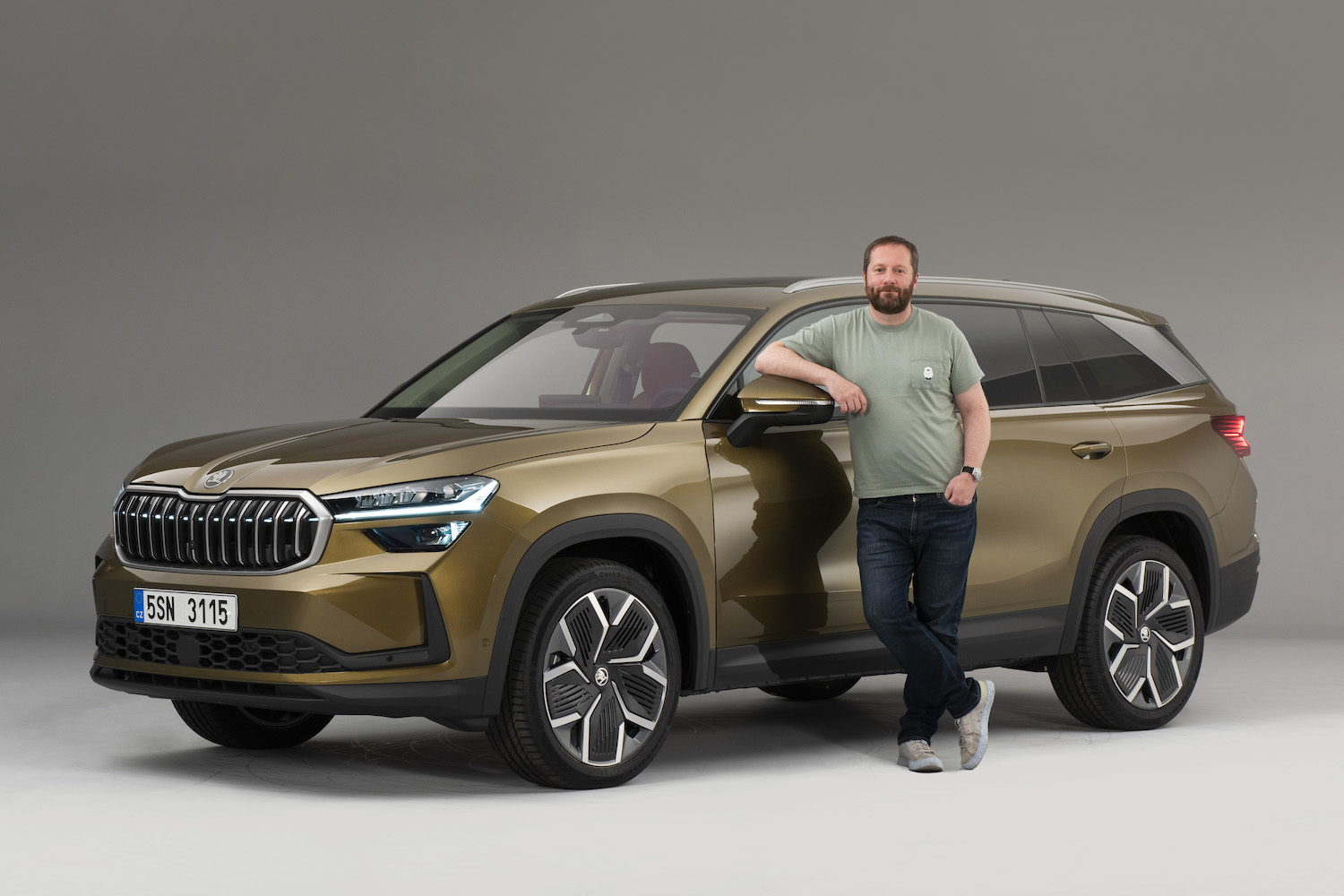The covers have come off the second-generation Skoda Kodiaq, revealing a new look and a range of improved engines, including a plug-in hybrid variant for the first time. While the overall concept doesn't differ significantly from the previous generation, the new Kodiaq carries many details that form part of the brand's new 'Modern Solid' design language.
Overall length increases by six centimetres, mostly due to new front and rear bumper designs, as the wheelbase (space between the front and rear wheels) is only one centimetre longer than the previous Kodiaq's. The Kodiaq's width is almost unchanged at 1,864 millimetres, as is the height of 1,659 millimetres. Wheel sizes will range from 17- to 20 inches and Skoda will offer nine exterior colours, including a new option called Bronx Gold.
Seven seats and more space
Skoda will continue to offer the Kodiaq with five- and seven-seat options depending on specification and drivetrain. The plug-in hybrid will only be available in five-seat guise.
Luggage capacity has been increased, with the five-seat version now accommodating up to 910 litres - an increase of 75 litres - which increases to 2,105 litres when the rear seats are folded down. The plug-in hybrid holds a little less. The seven-seat version can hold 340 litres when all seats are in place, representing a 70-litre increase, and 845 litres when the third row of seats are folded. With all rear seats down, it can hold 2,035 litres of volume. Passenger headroom in the third-row seats increases by 15 millimetres over the previous generation.
New matrix LED headlights combine with an illuminated front grille design (optional on some versions) to give the Kodiaq a more distinctive appearance. Featuring 14 light elements, it forms a link between the headlights. The lower bumper section includes a wide air intake with air curtains that channel airflow to improve efficiency. At the rear, Skoda continues to use its signature C-shaped lighting design that features a red bar spanning the full width of the tailgate linking the lower sections of both lights. The central part of this does not illuminate.
Skoda's Head of Design, Oliver Stefani, said: "The all-new Kodiaq is both modern and dynamic, with a strikingly distinctive look. In line with the 'form follows function' principle, we have incorporated the first elements of our future Modern Solid design language. Reinterpreting the essence of the Skoda SUV was a collaborative effort, and I am confident we have found the right ingredients to ensure the second generation's success."
A mixture of digital and physical controls inside
Keen to retain the sensible approach to how it designs its cars, the interior of the new Kodiaq features plenty of digitalisation yet continues with physical controls for the more commonly used functions. Joining the 10-inch digital instrument display is a central 10-inch touchscreen that uses gesture and voice control. An optional 13-inch freestanding touchscreen display will also be available.
Skoda equips the Kodiaq with four USB-C ports as standard (two in the front and two in the rear), and 45W outputs mean they can charge laptops and tablets. There is also a 15W USB-C port on the back of the interior mirror to power a dashcam. An optional wireless charging pad can accommodate two smartphones simultaneously at a 15W rate thanks to a built-in cooling function.
There is more space between the front seats than before as the drive selector is relocated to the steering column. That has been made possible as all Kodiaqs now use automatic transmissions. Another new element is the introduction of Smart Dials which feature 32-millimetre colour displays set within rotary controllers. These allow for multiple functions on the same dials. The outer dials control seat heating, seat ventilation and cabin temperature for the driver and passenger, while the central item provides access to different functions.
Four interior design selections are available, similar to the Enyaq iV, and include Loft, Lounge and ecoSuite. Chrome is no longer used in the Kodiaq and is replaced by a material called Unique Dark Chrome. All seat upholstery, carpets and headlining come from recycled polyester and a combination of 40 per cent natural wool in the Lounge version. The leather used in the Kodiaq is dyed using coffee bean processing residues.
A broad range of engines for the new Skoda Kodiaq
Although the Irish line-up has yet to be announced, buyers will have the choice of different engines, all of which will feature automatic DSG transmissions, starting with a 1.5-litre petrol mild-hybrid producing 150hp. This engine uses a 48-volt electrical system featuring a belt-driven starter-generator and a lithium-ion battery. The hybrid system enables engine-off coasting to reduce emissions and can provide a slight power boost when needed. Active cylinder technology can deactivate two of the engine's four cylinders when under less load to reduce fuel consumption further.
A 2.0-litre petrol engine produces up to 204hp, while on the diesel side of things, there are two versions of the 2.0-litre TDI with outputs of 150hp and 193hp. The higher-output petrol and diesel engines will come with all-wheel drive as standard.
The addition of a plug-in hybrid variant of the Kodiaq will be good news to some, though it is also likely to be the costliest model due to the lack of government incentives for PHEVs in Ireland. A 150hp 1.5-litre four-cylinder petrol engine is paired with an electric motor to produce a combined output of up to 204hp, driving the front wheels via a six-speed DSG automatic transmission. It uses a 25.7kWh battery enabling an official electric driving range of more than 100 kilometres. Furthermore, the Kodiaq PHEV is capable of 50kW rapid charging and 11kW on AC connections.
Skoda is introducing a new DCC Plus Dynamic Chassis Control option for the second-generation Kodiaq. It uses two independently controlled valves to separate the rebound and compression stages of the suspension, unlike the previous version, which used a single valve. This updated system provides a broader range of adjustment and is claimed to enhance driving dynamics.
Skoda will continue to offer the popular Kodiaq Sportline as its current range-topping model. It will use 19-inch wheels with a polished anthracite finish as standard with the option of a 20-inch wheel featuring aero covers. The door mirrors, window frames, roof rails and rear diffuser are all painted in a gloss black, as are the badges. Inside, it gets sports seats with integrated headrests and black Suedia microfibre.
Irish pricing for the new Skoda Kodiaq has yet to be confirmed, but it is expected to come with a slight price increase over the outgoing generation when it arrives in Ireland in the second quarter of 2024.



